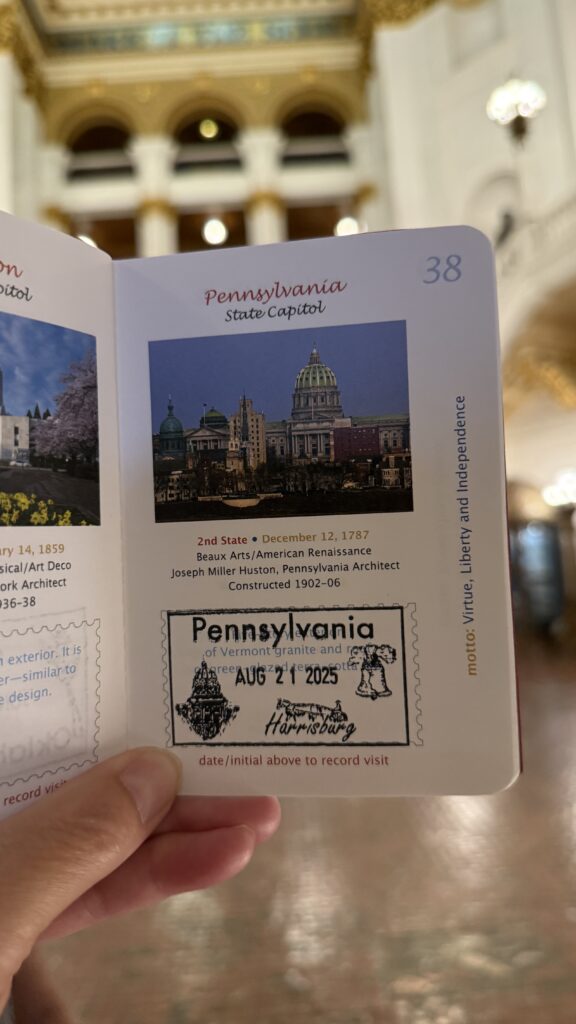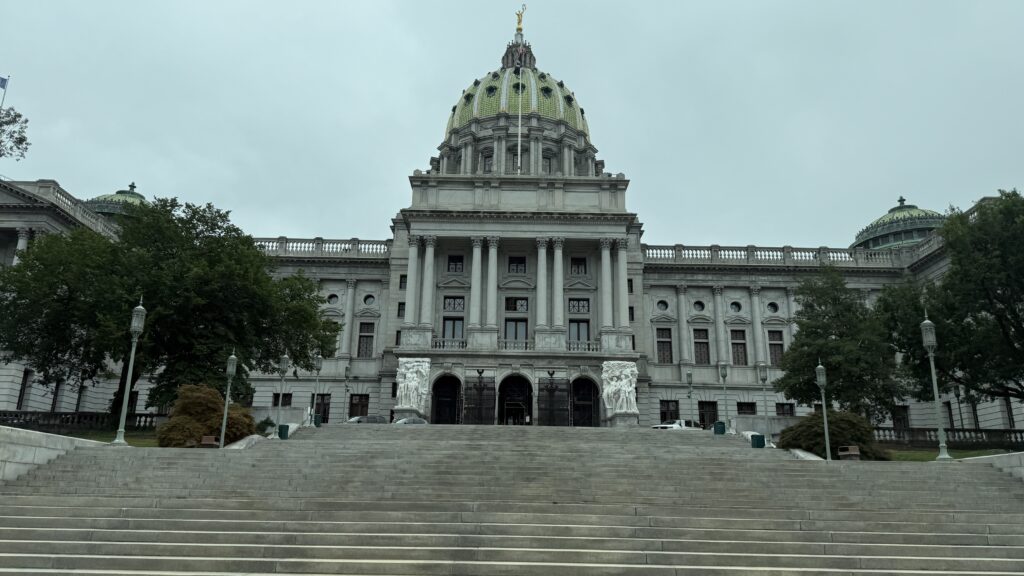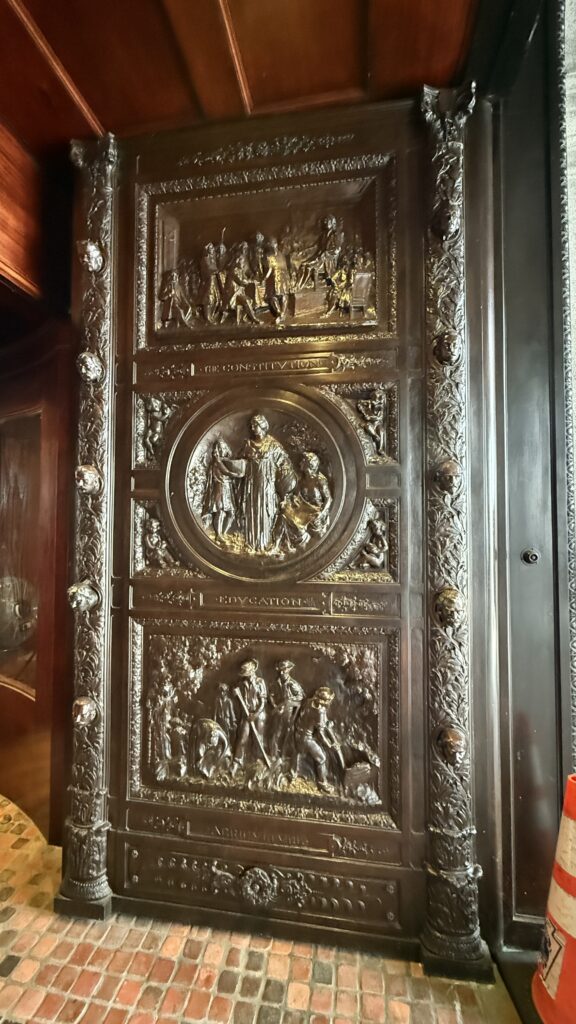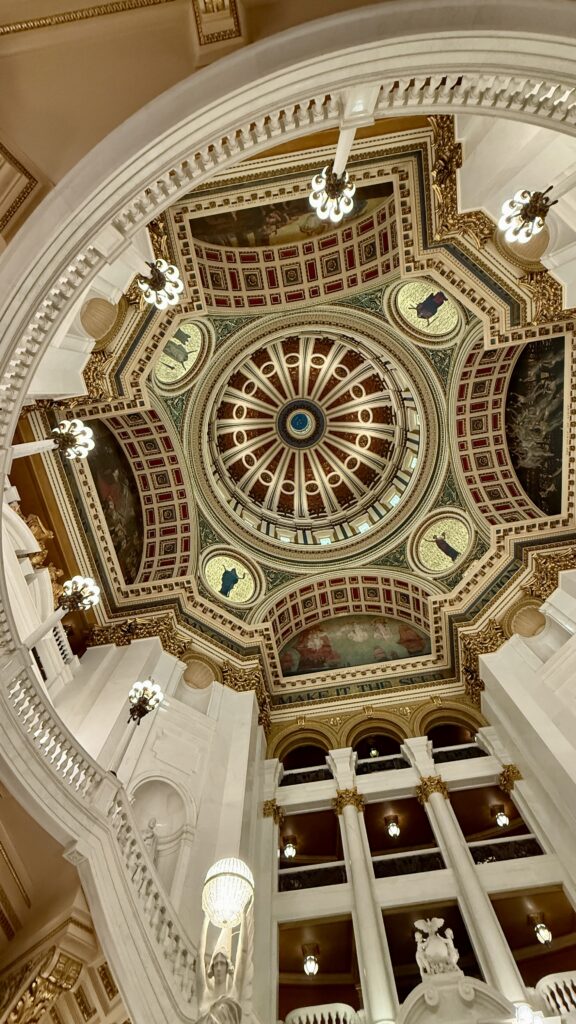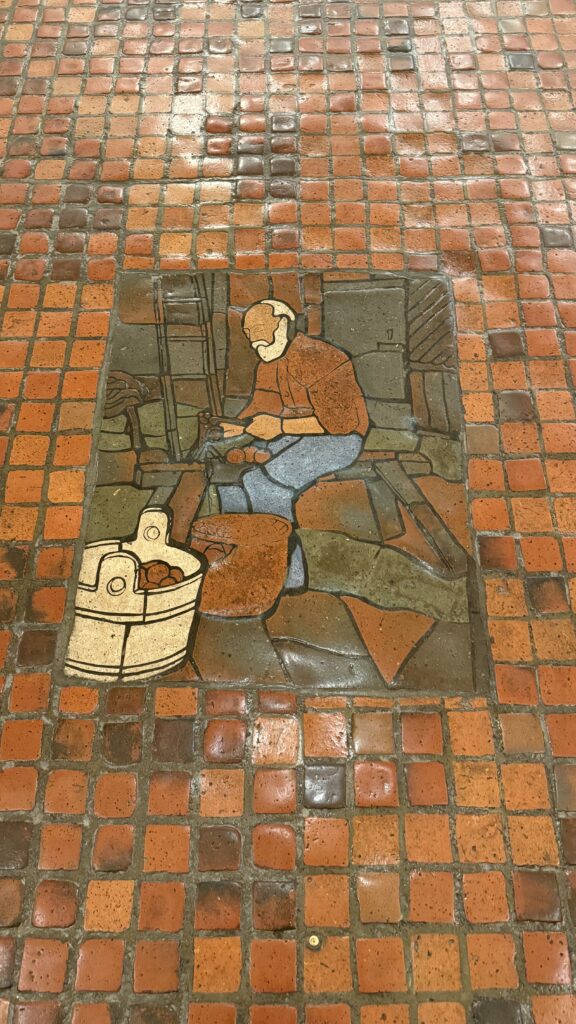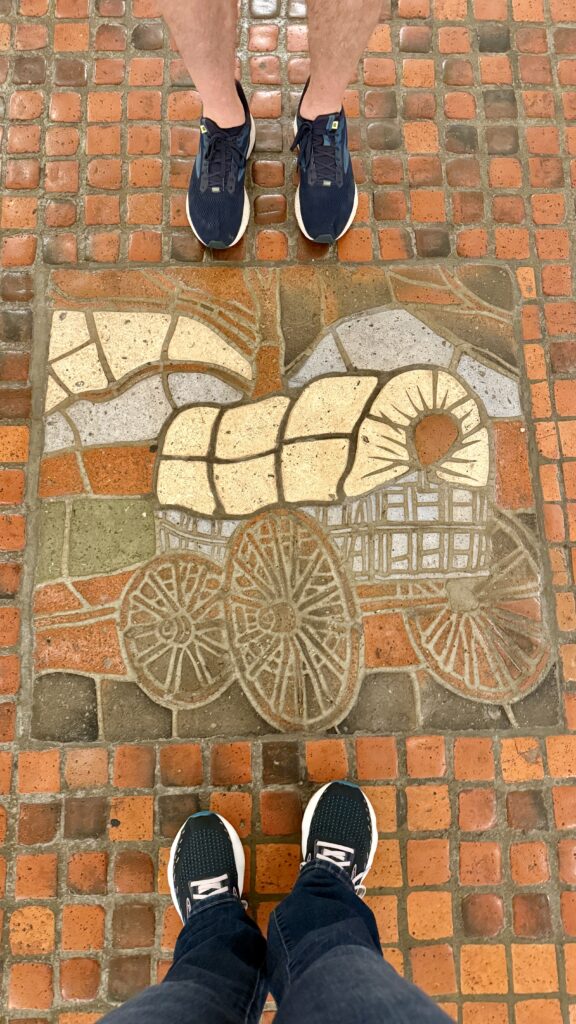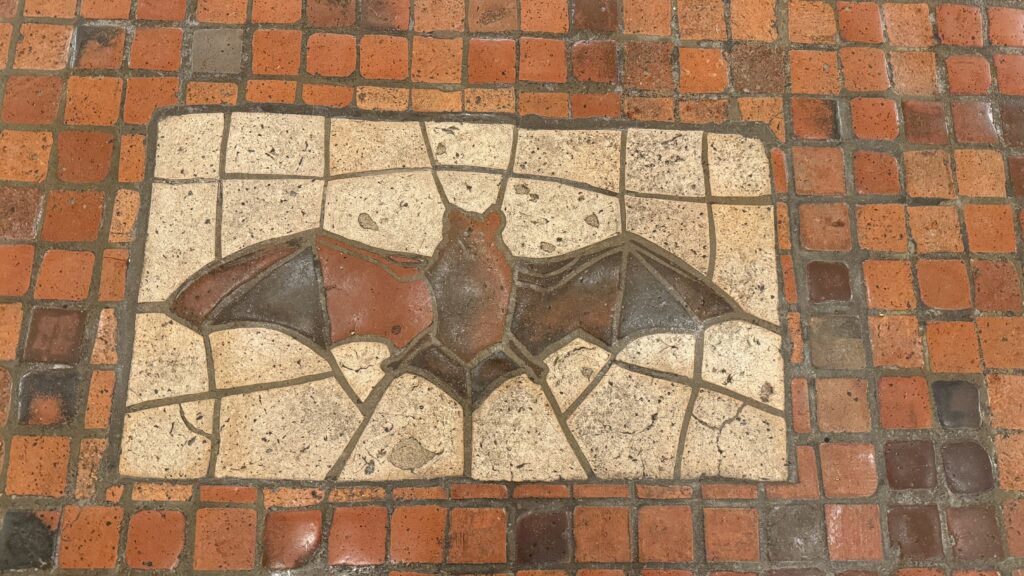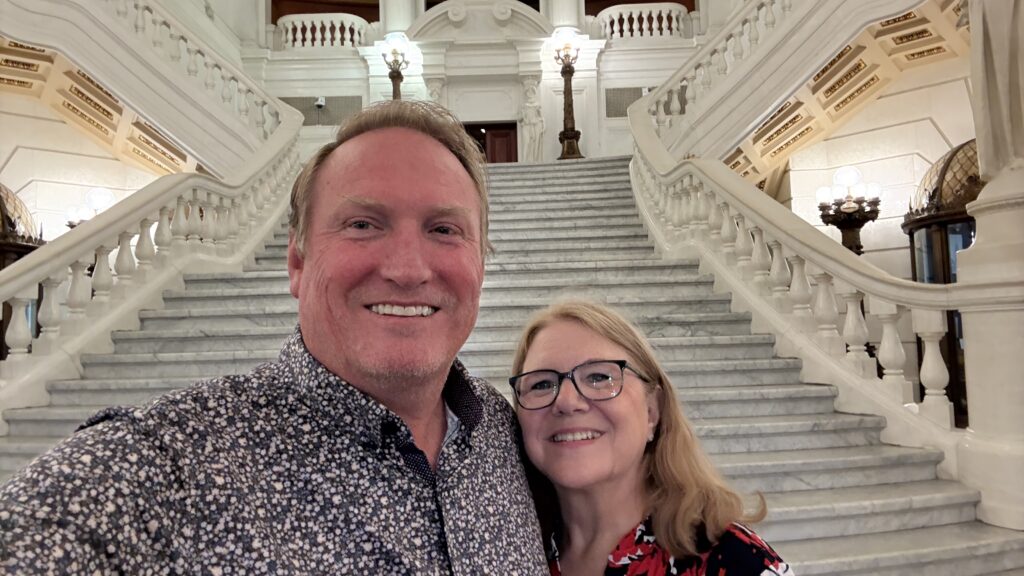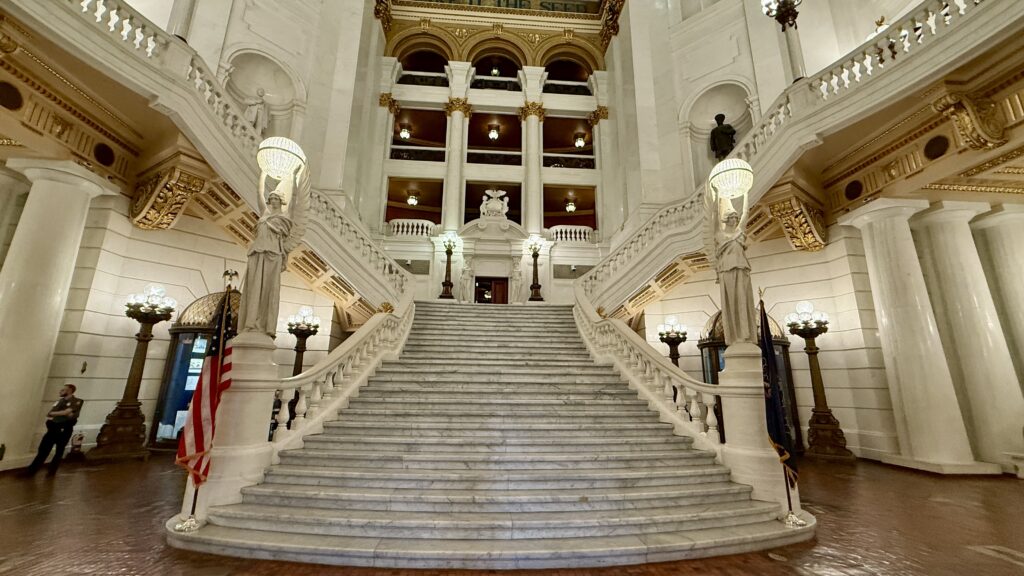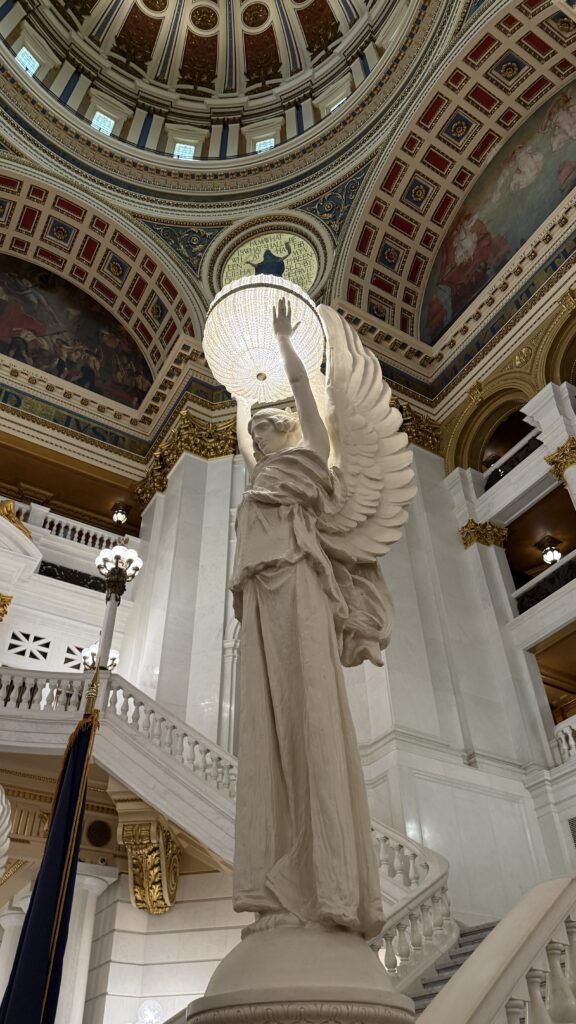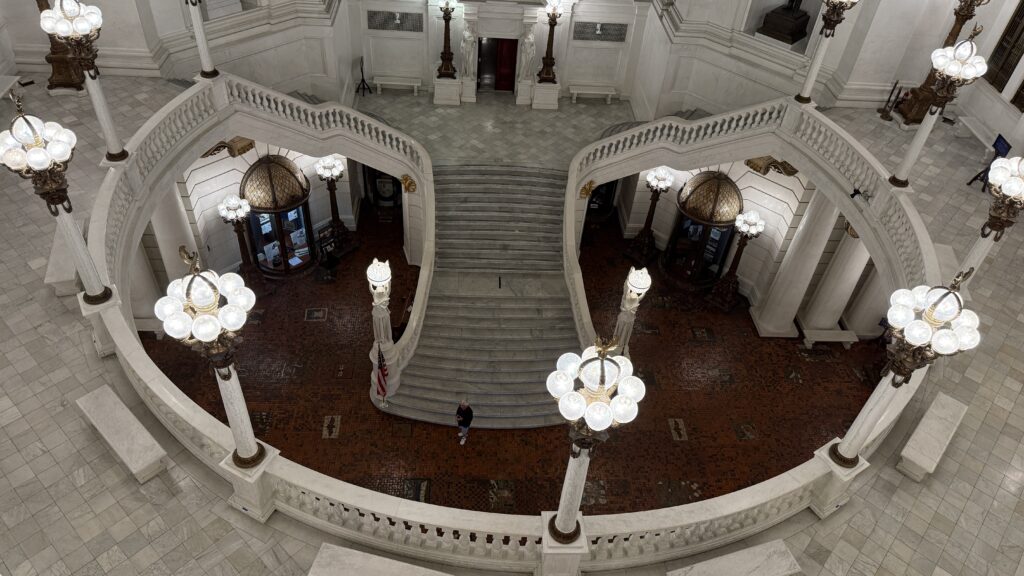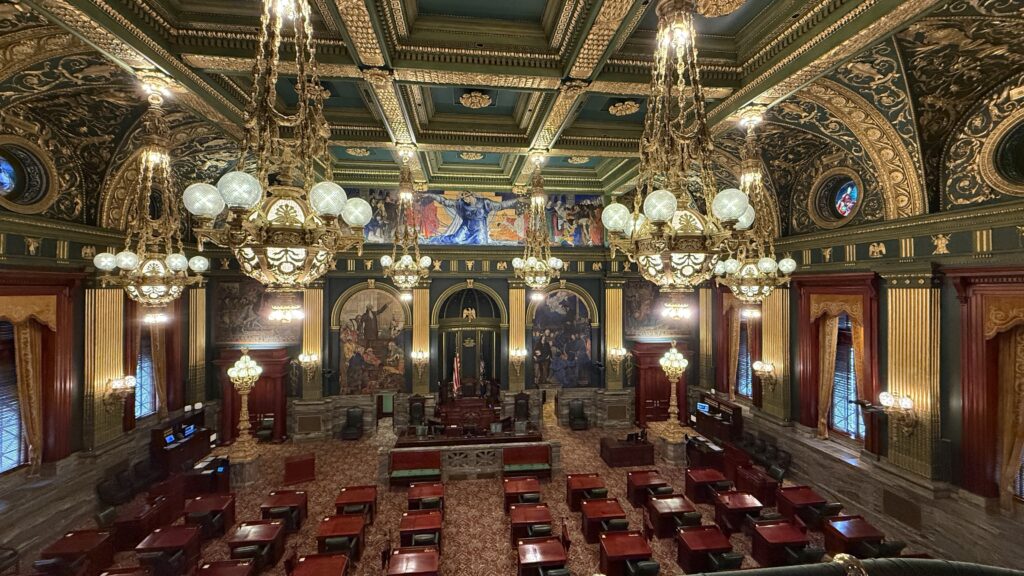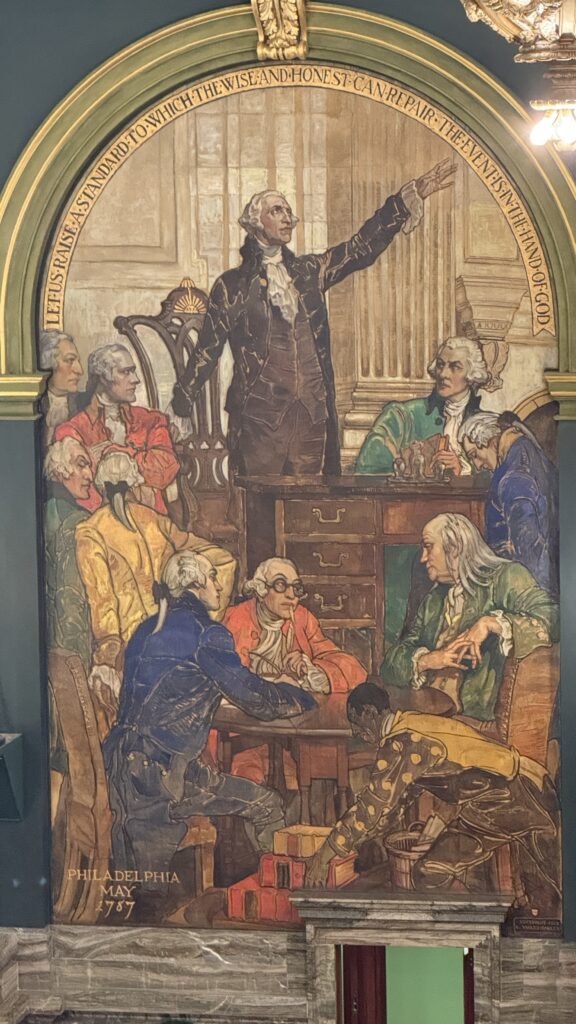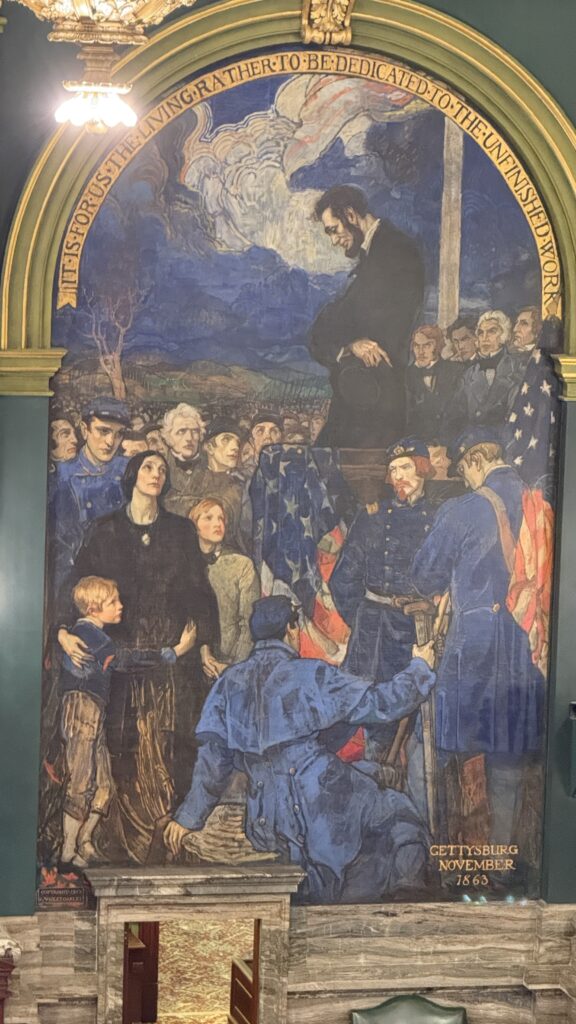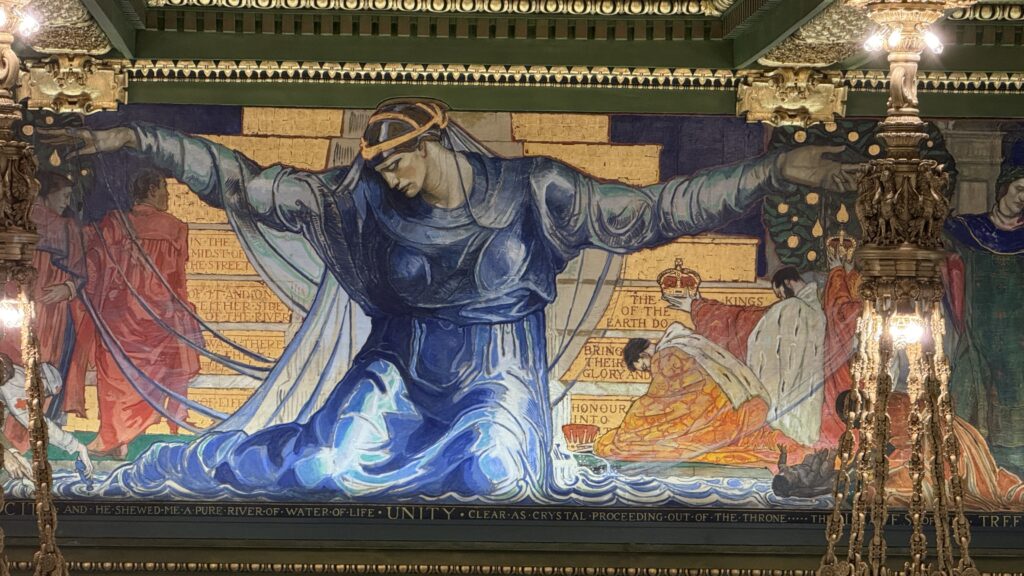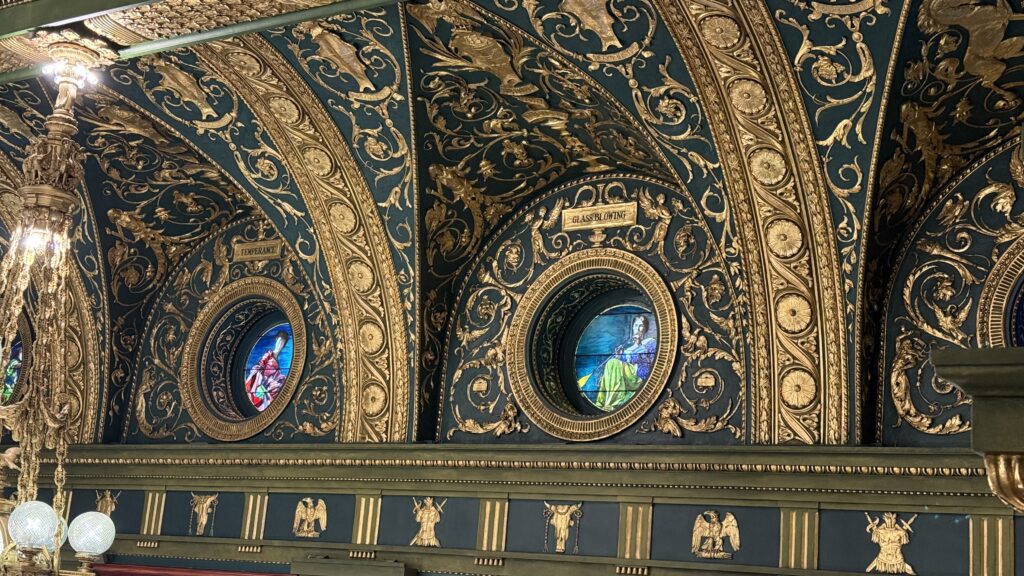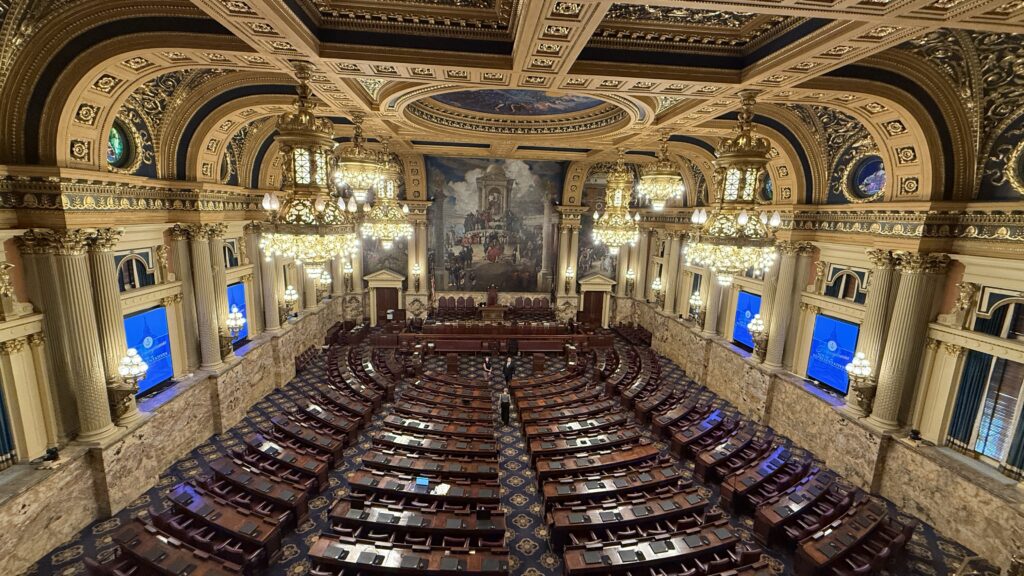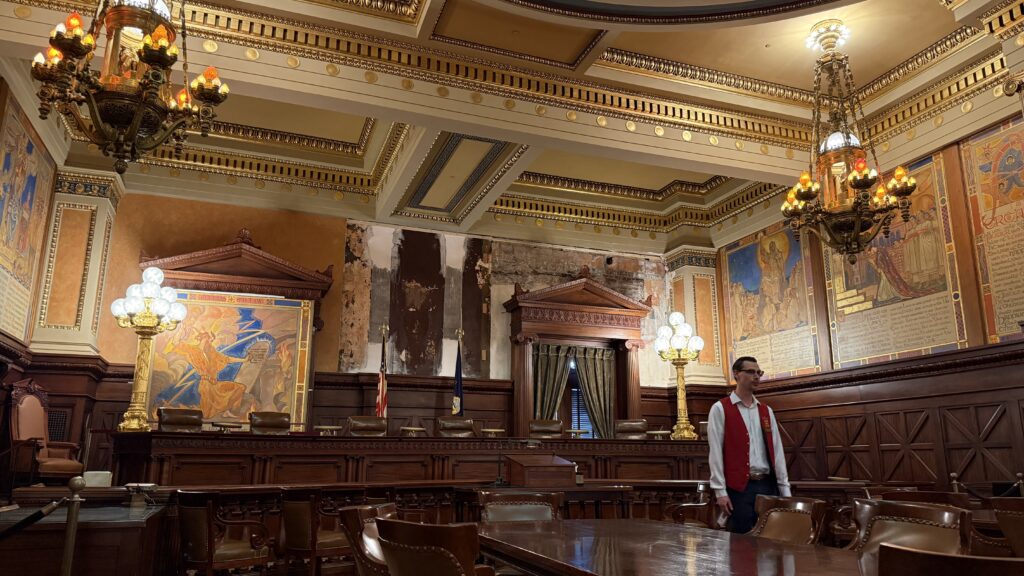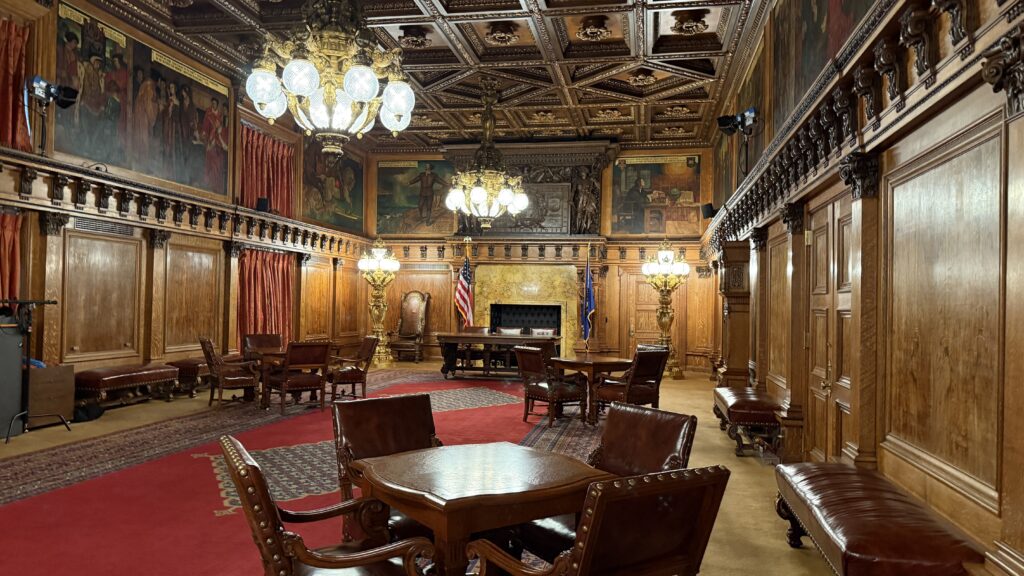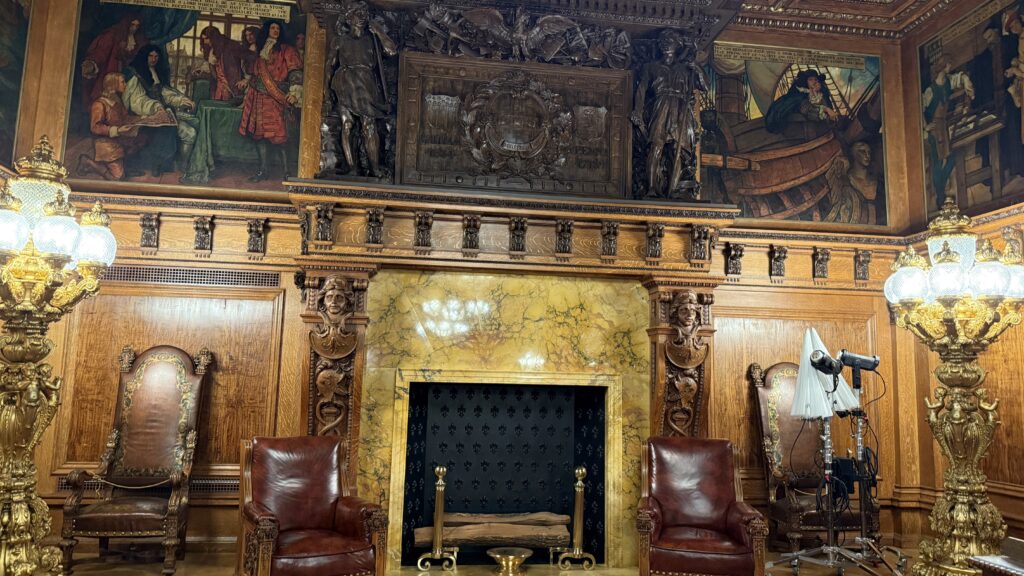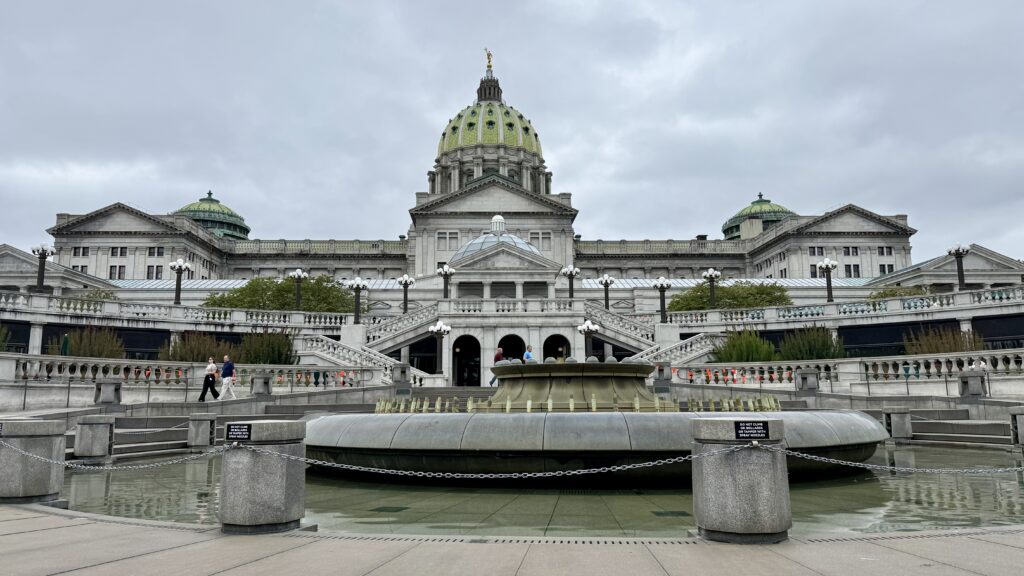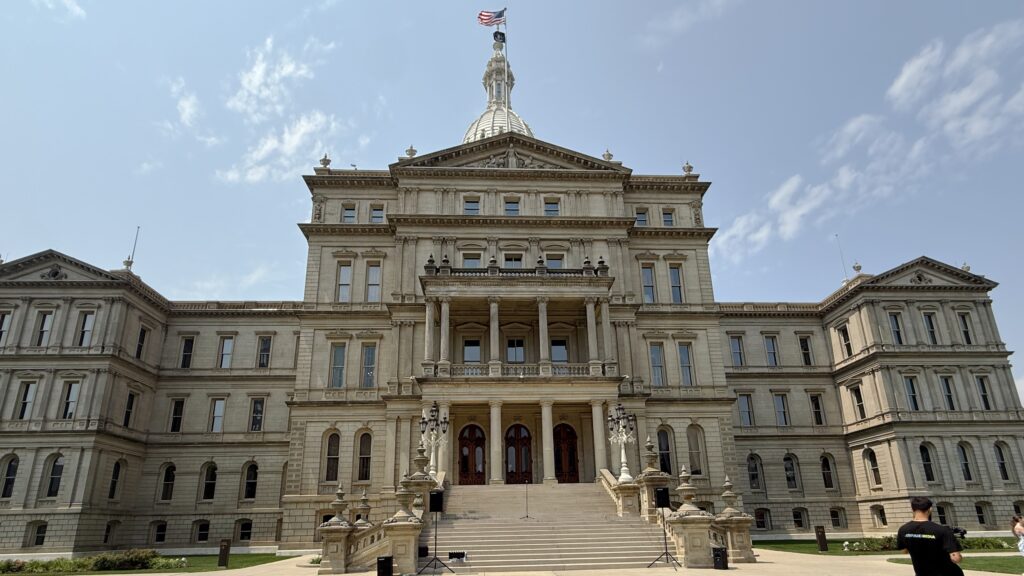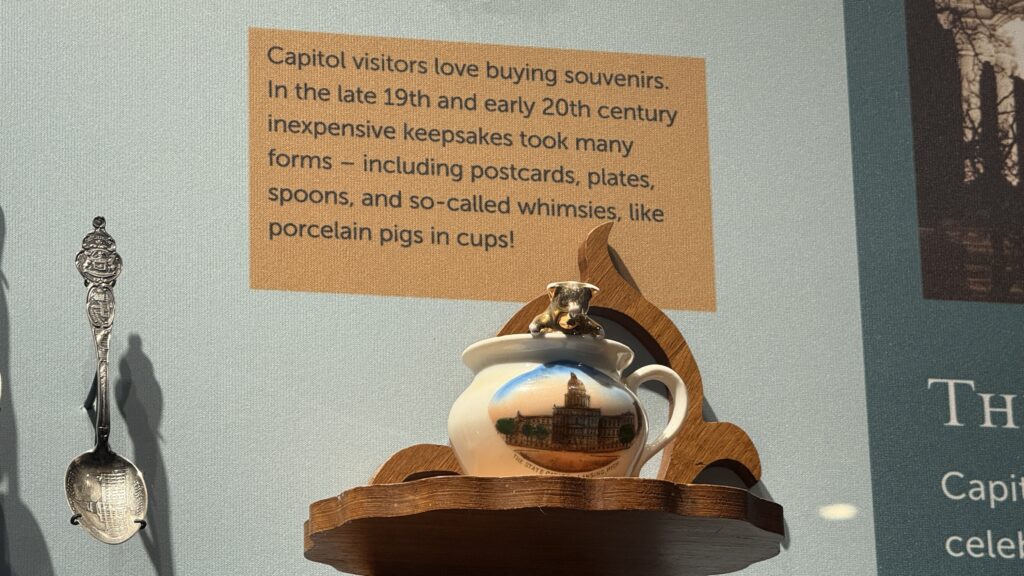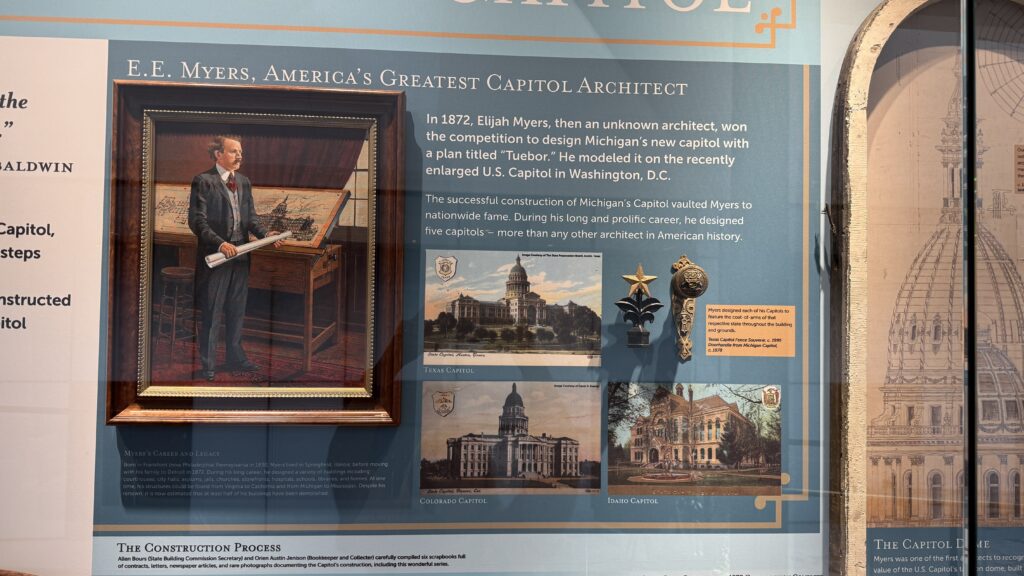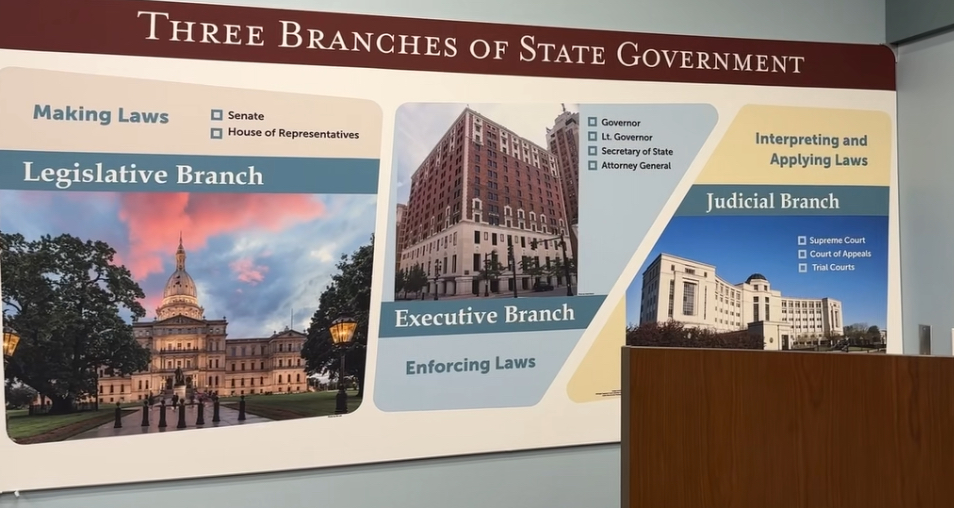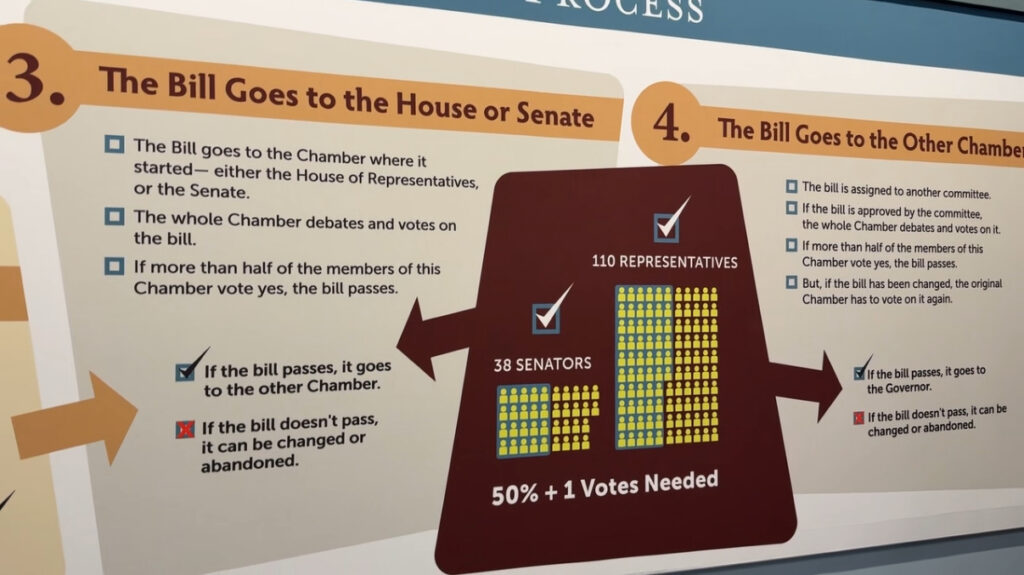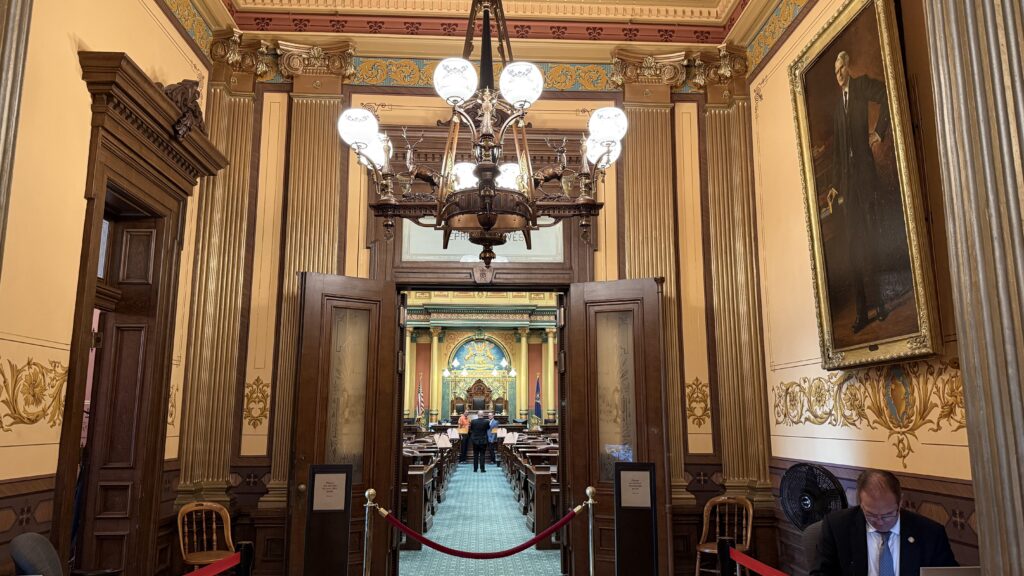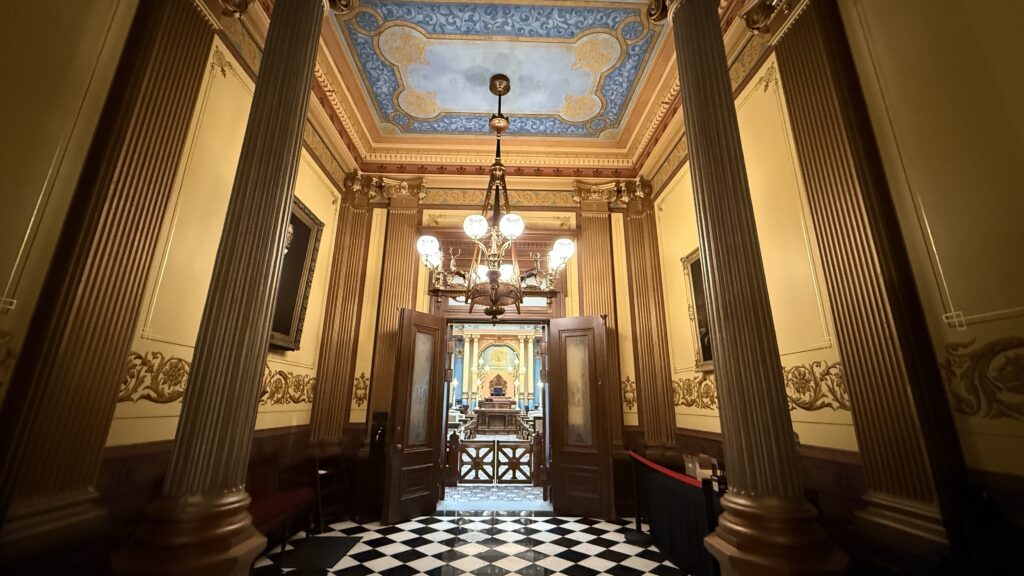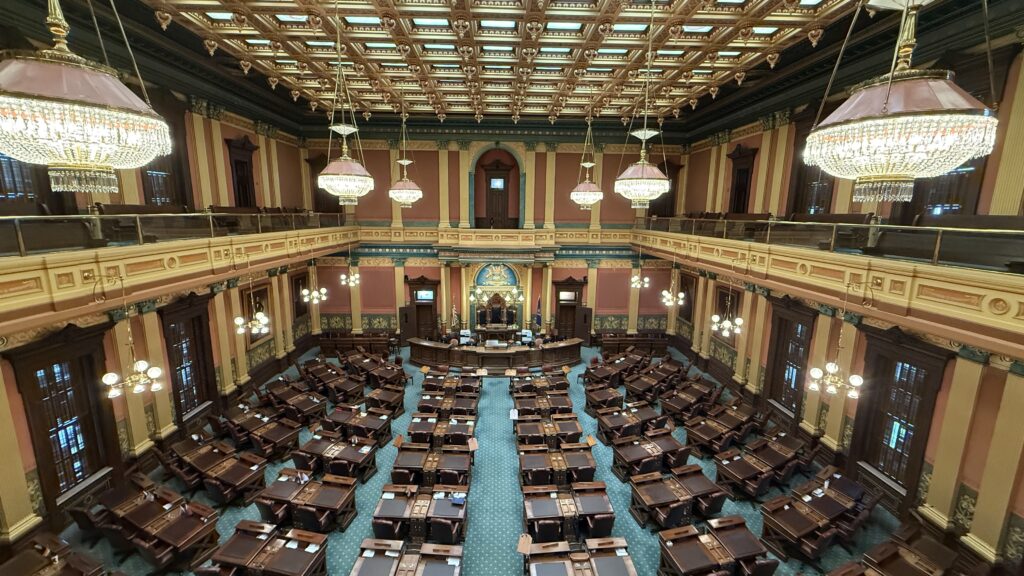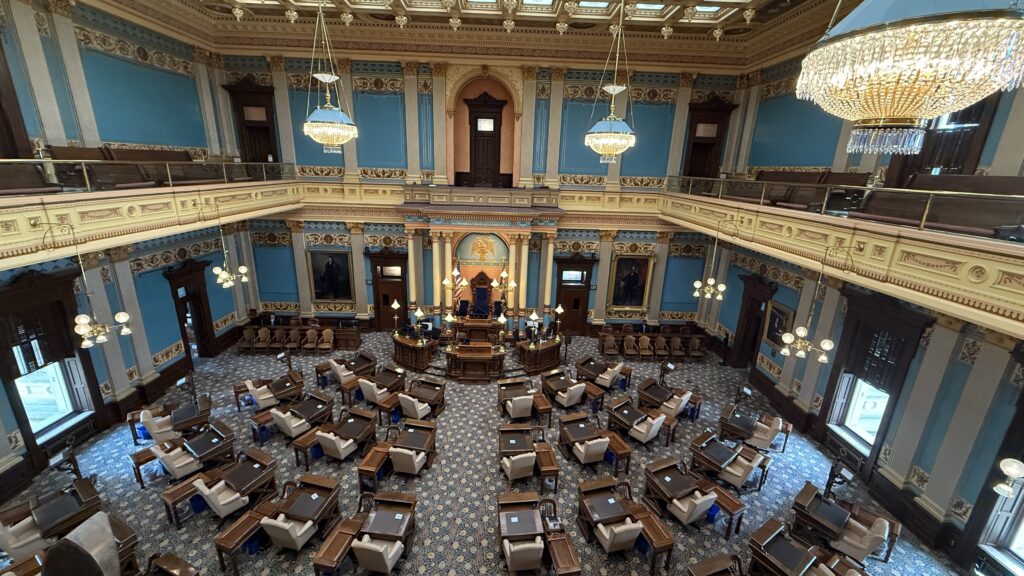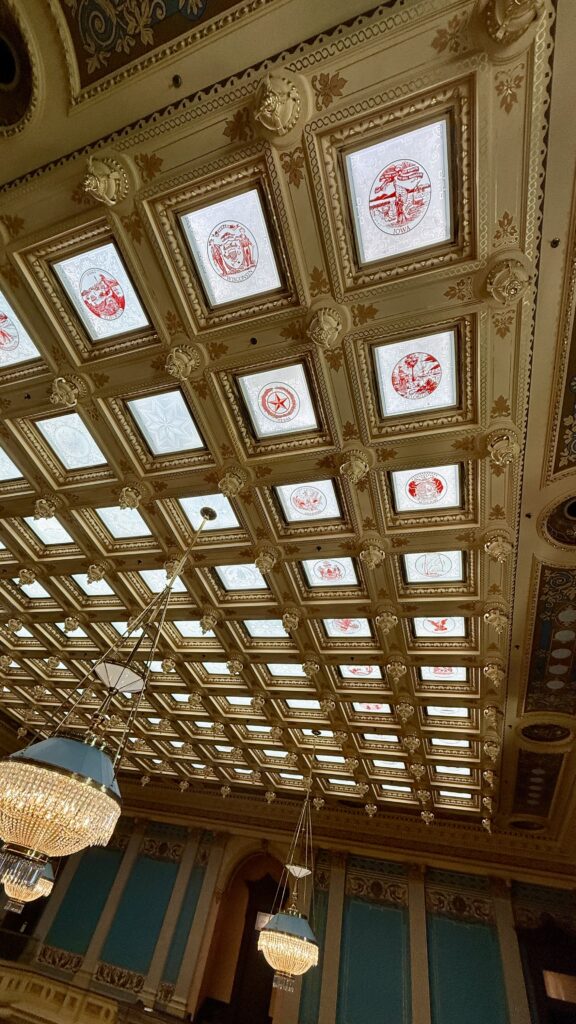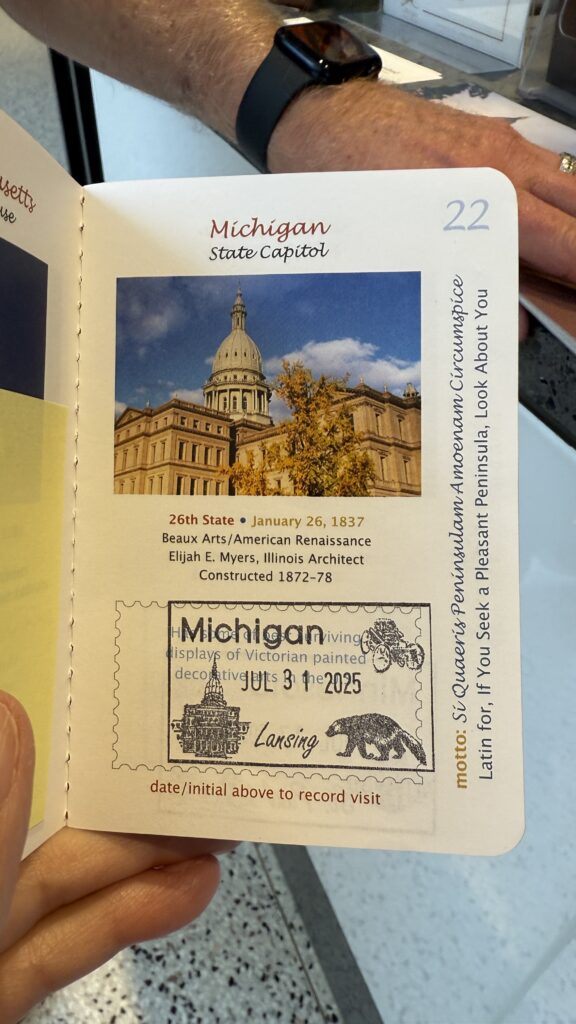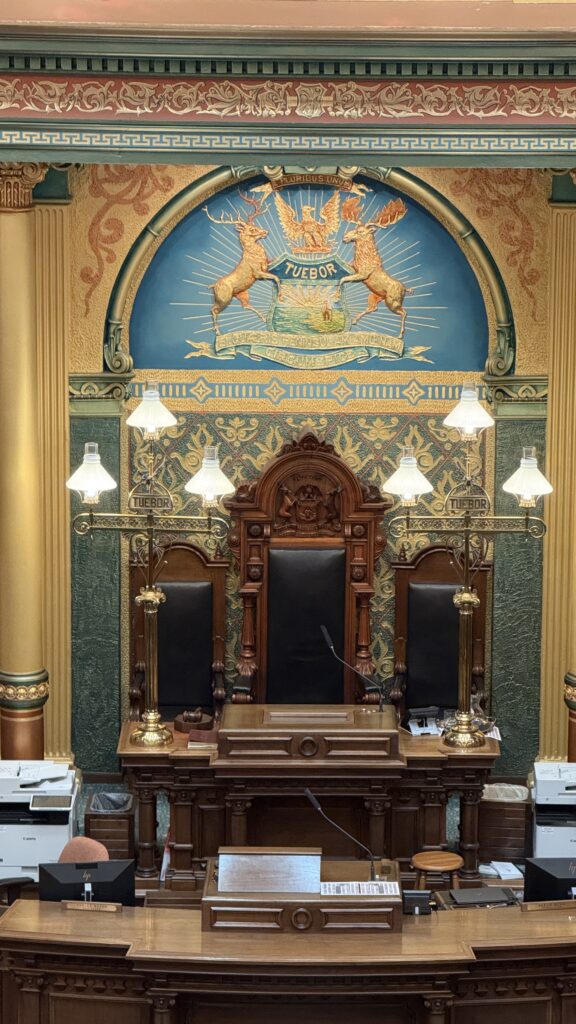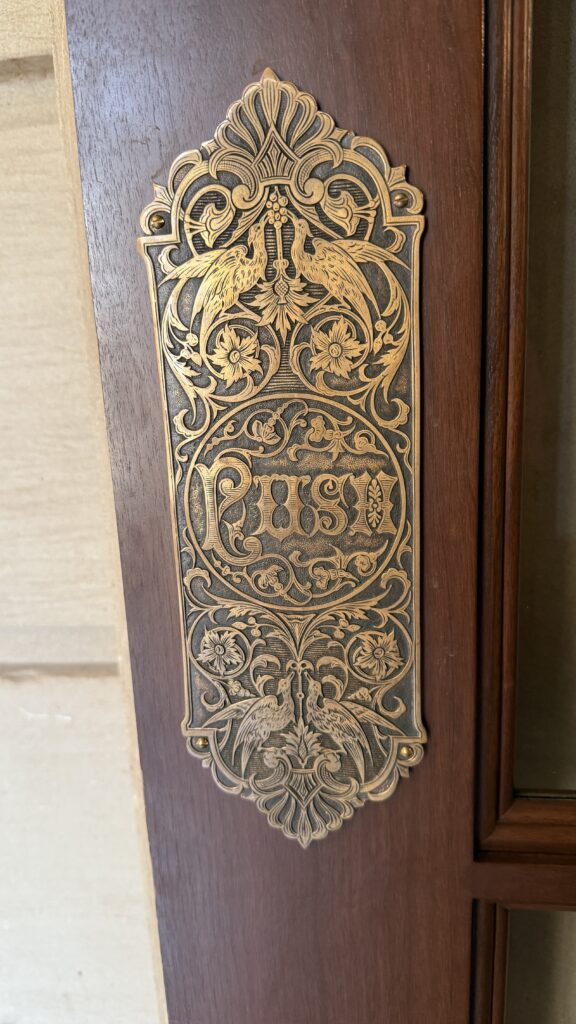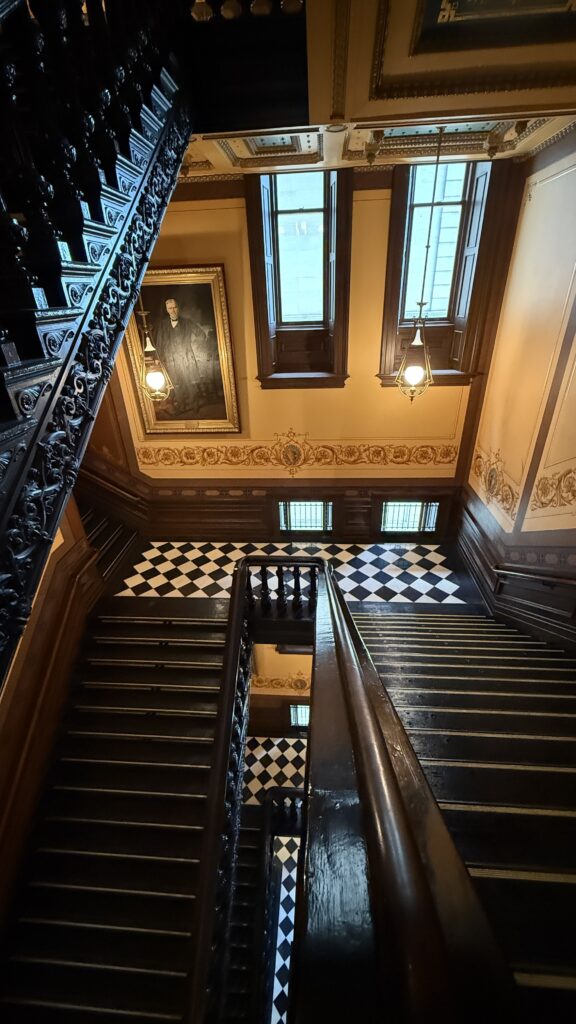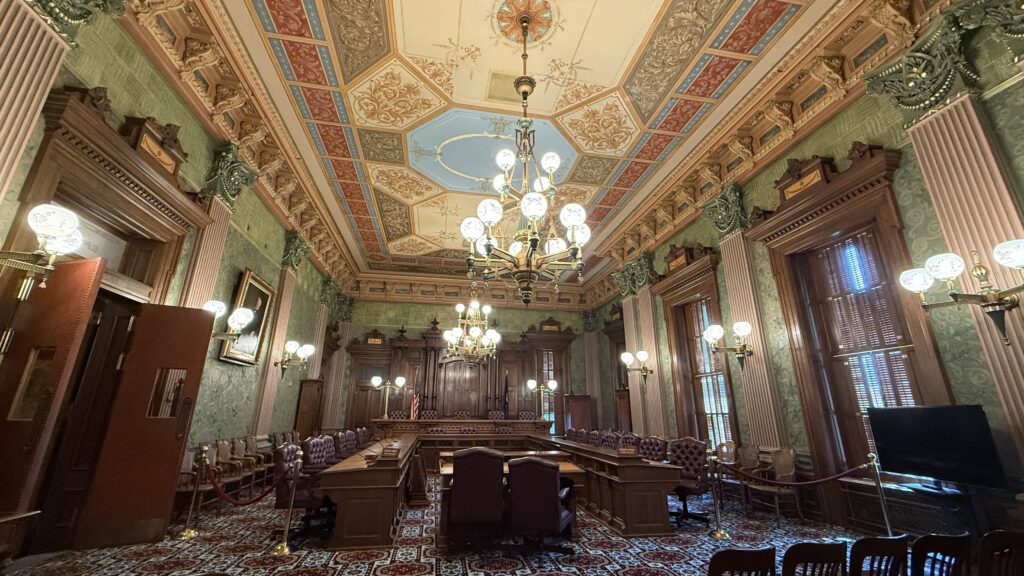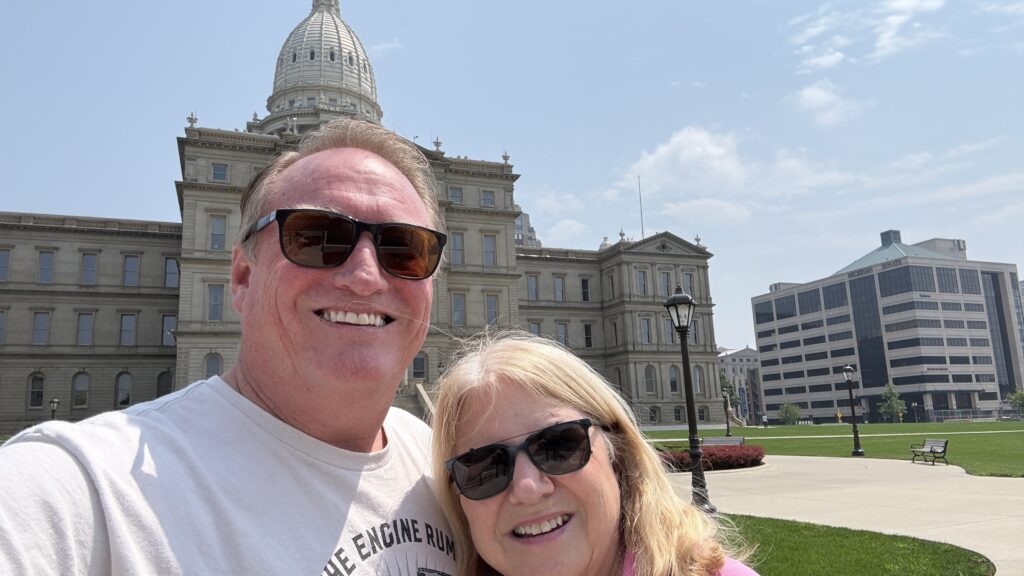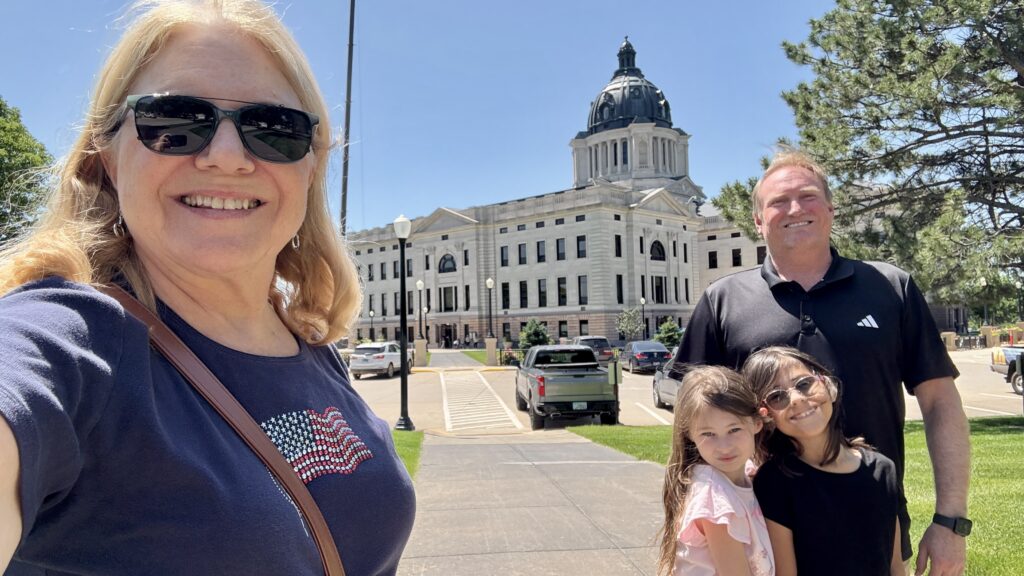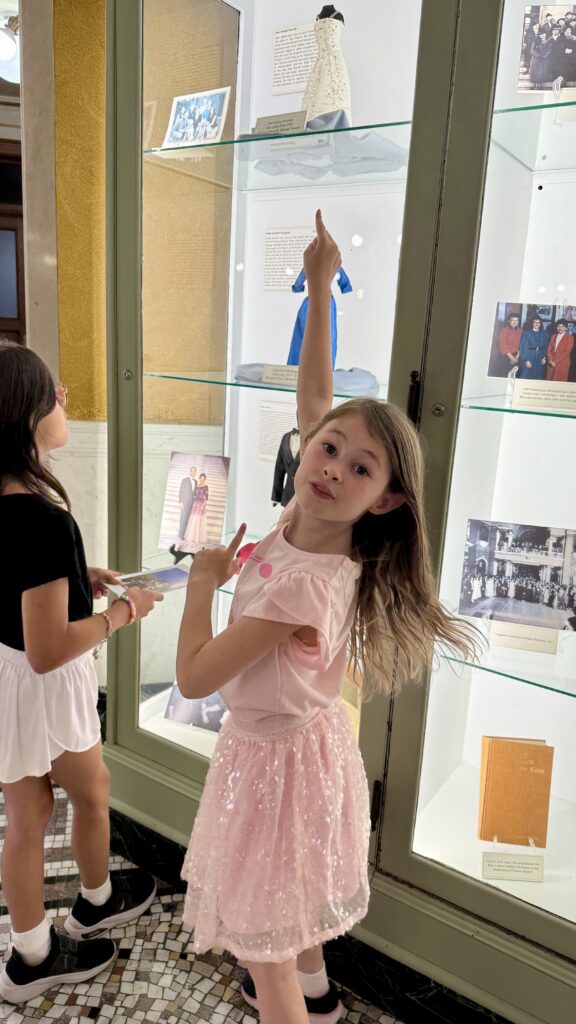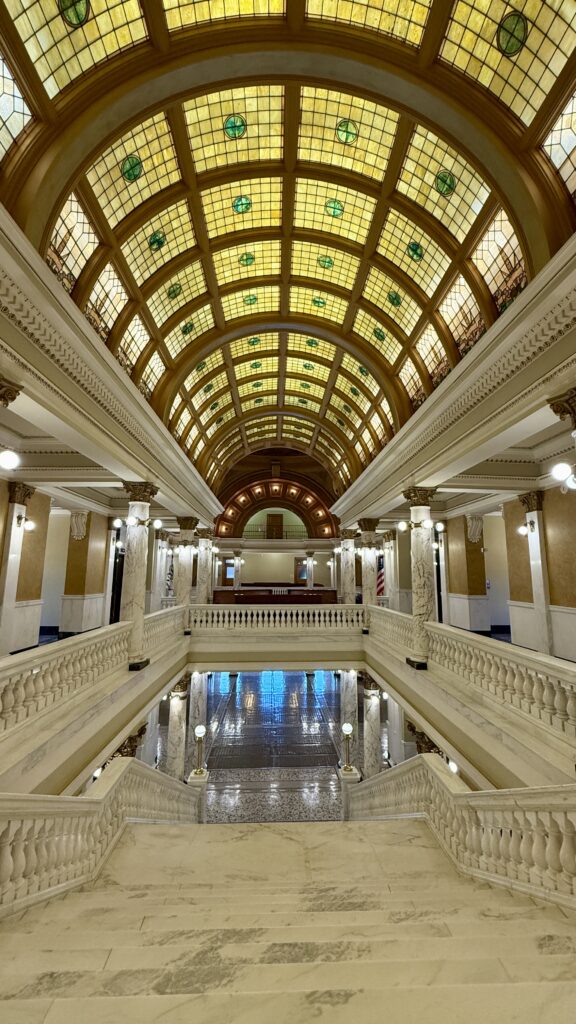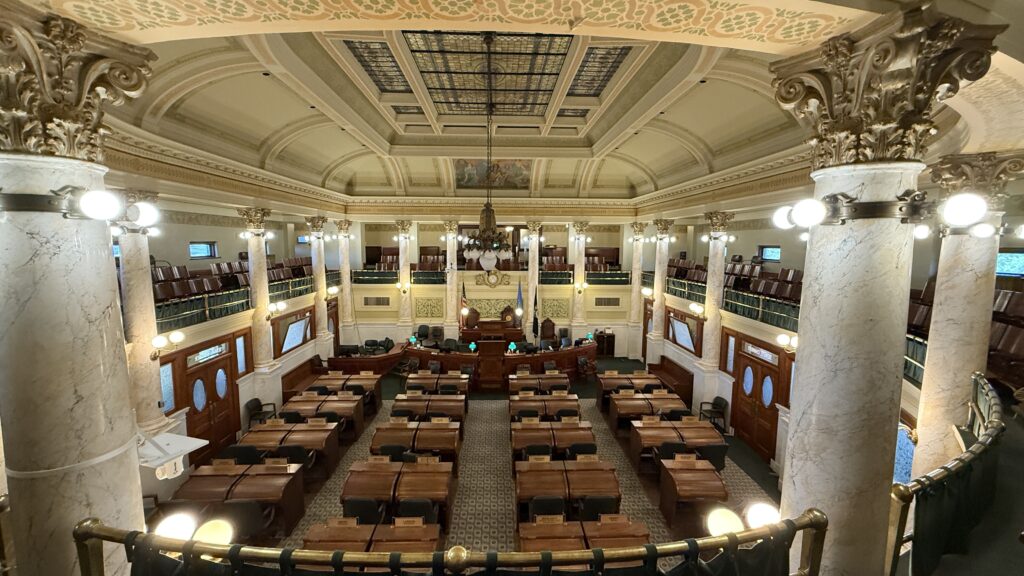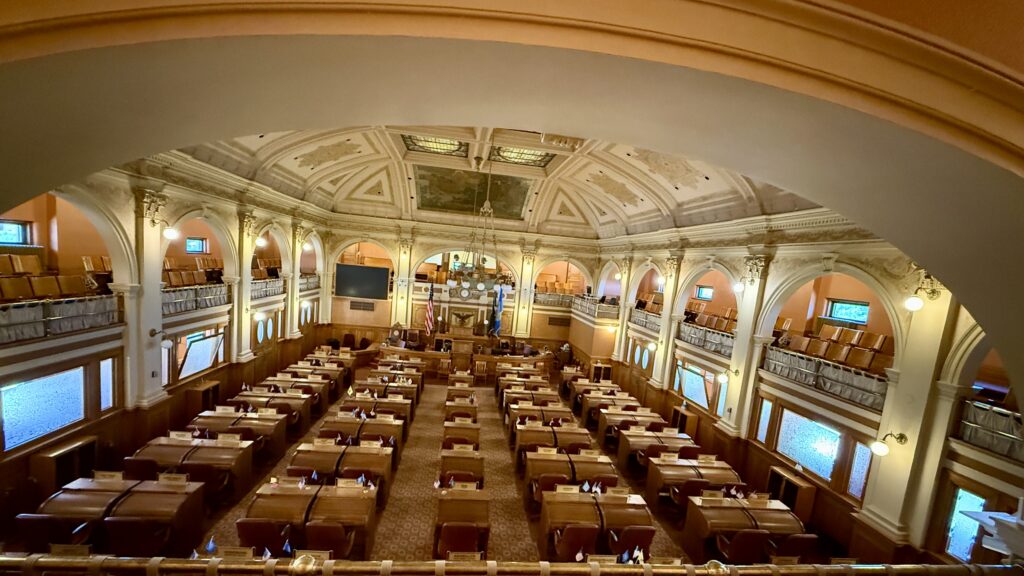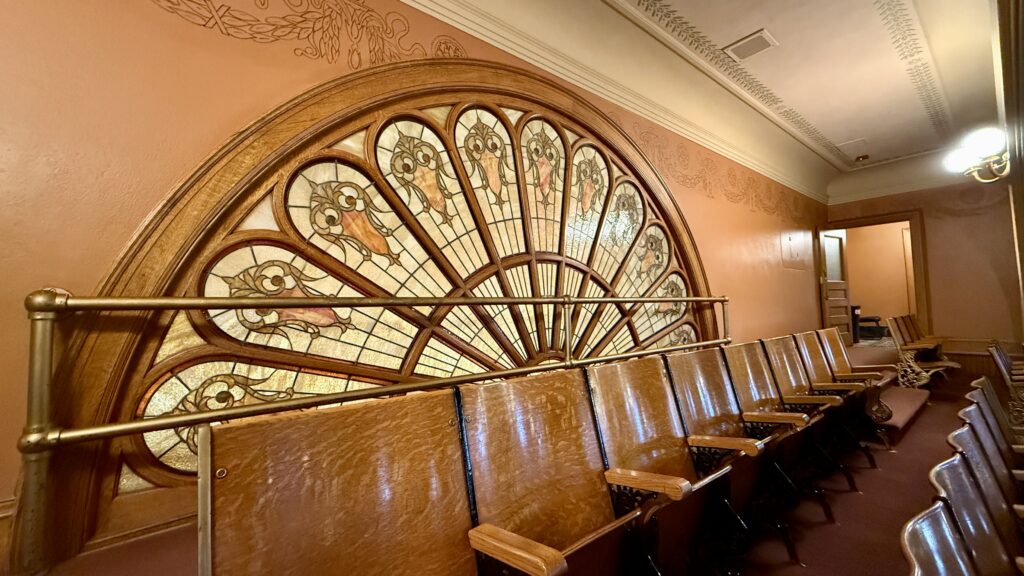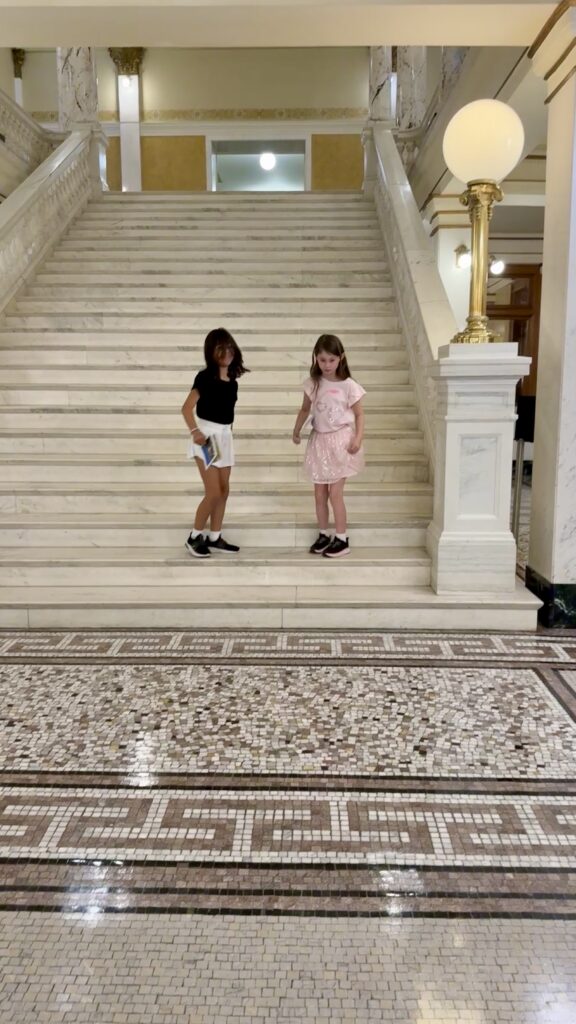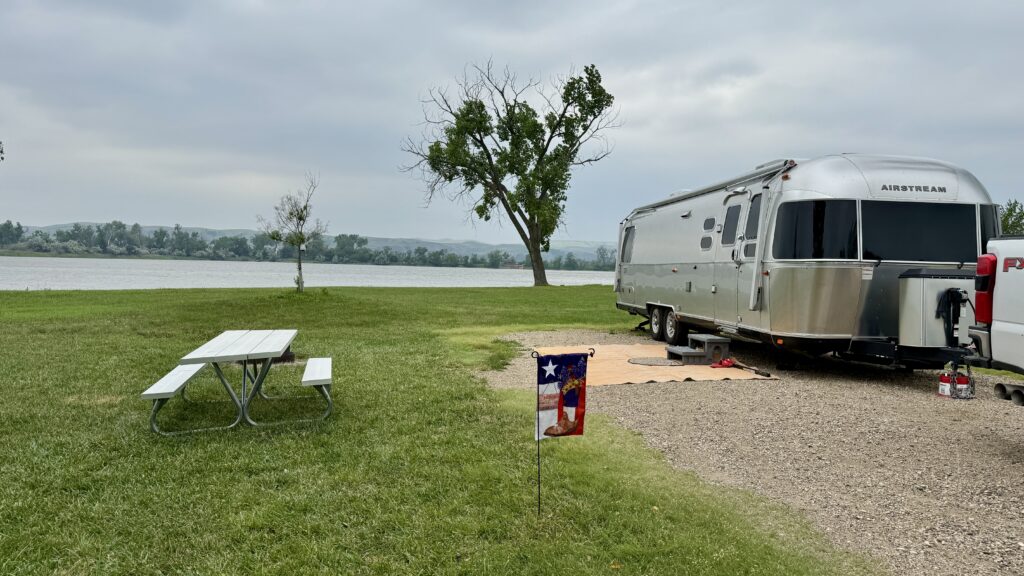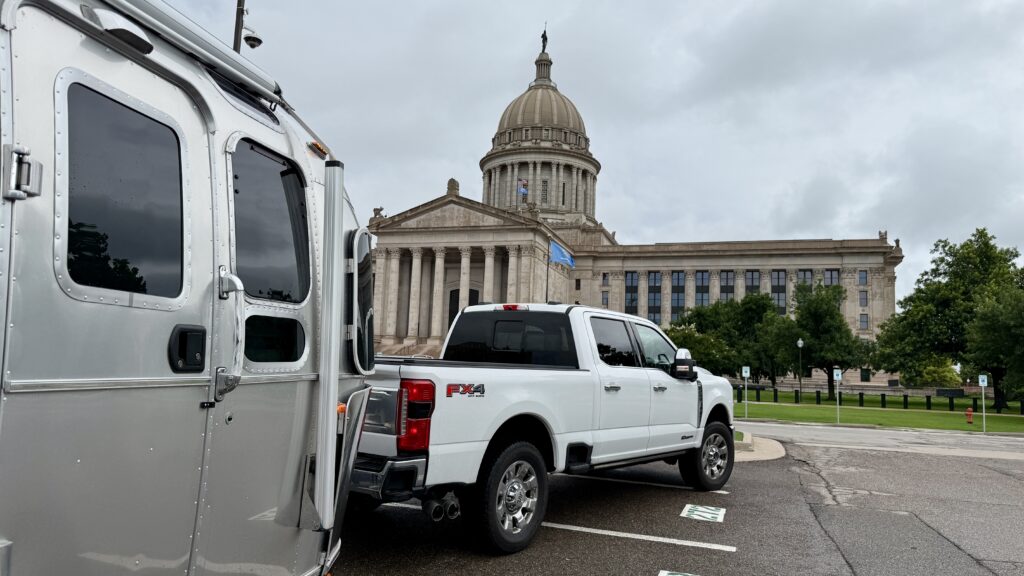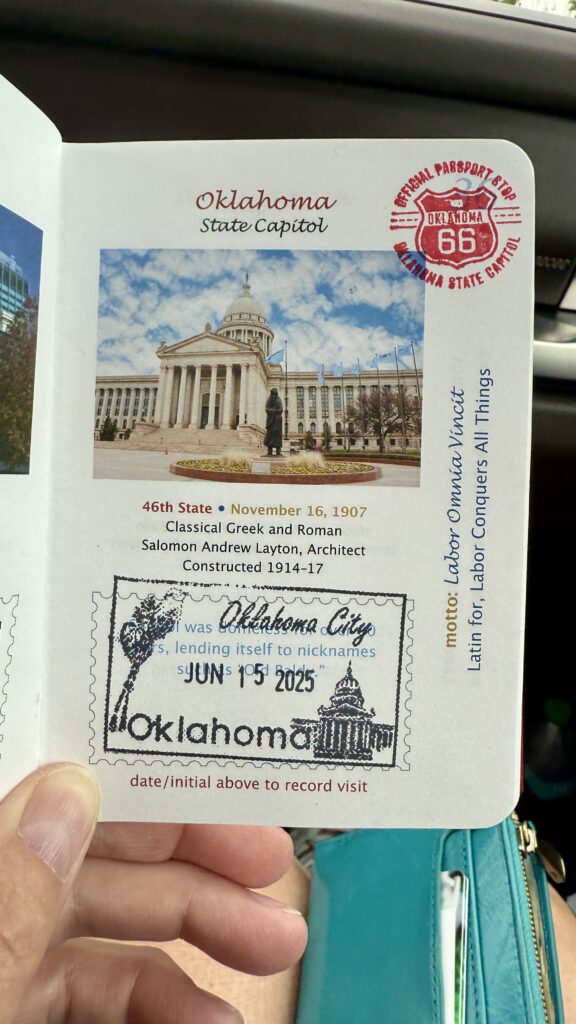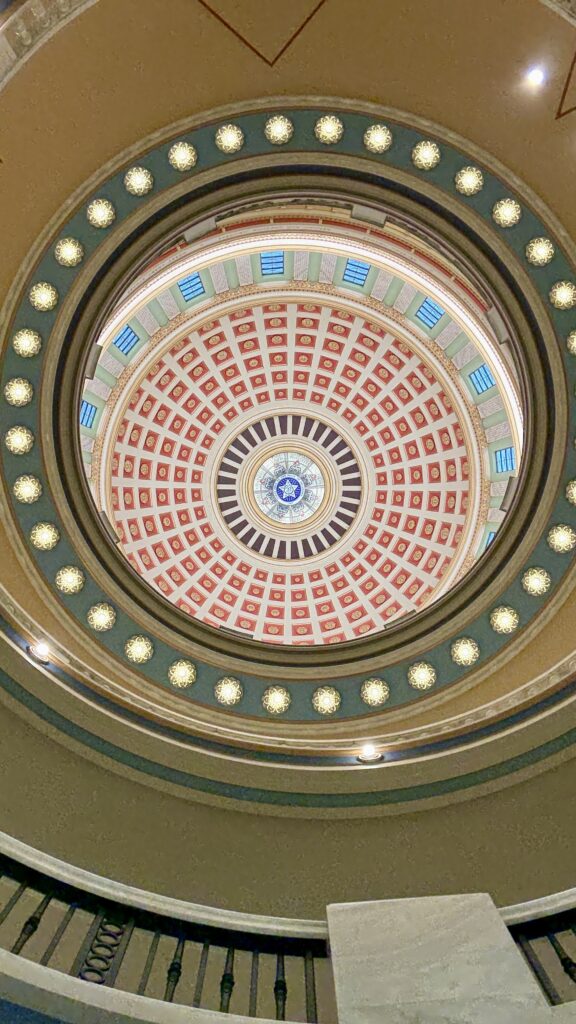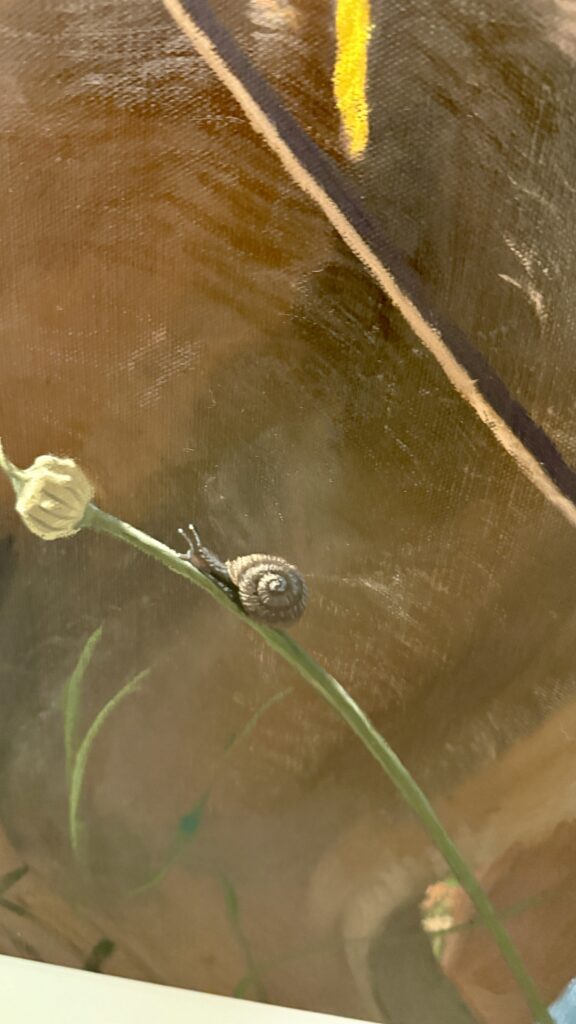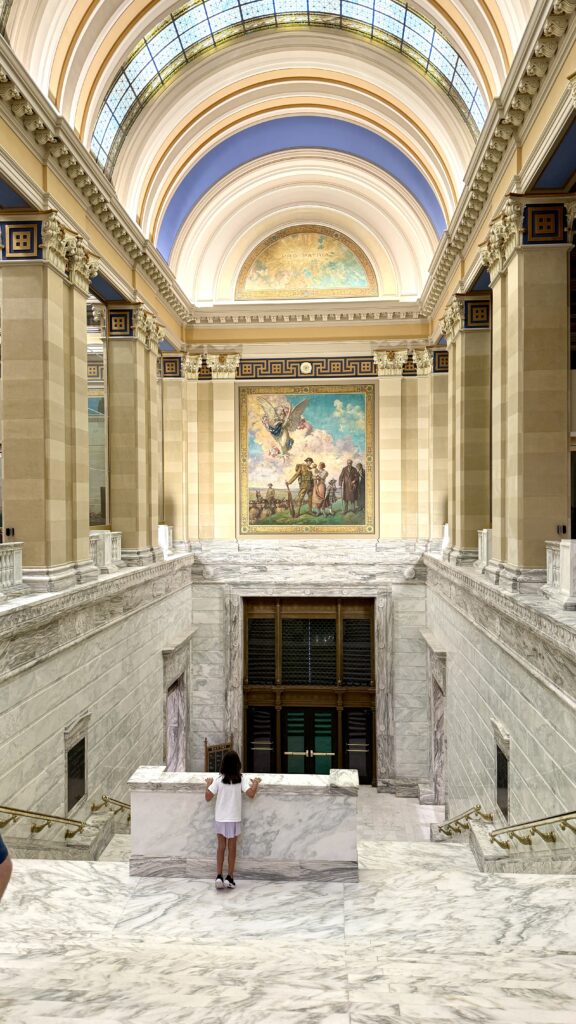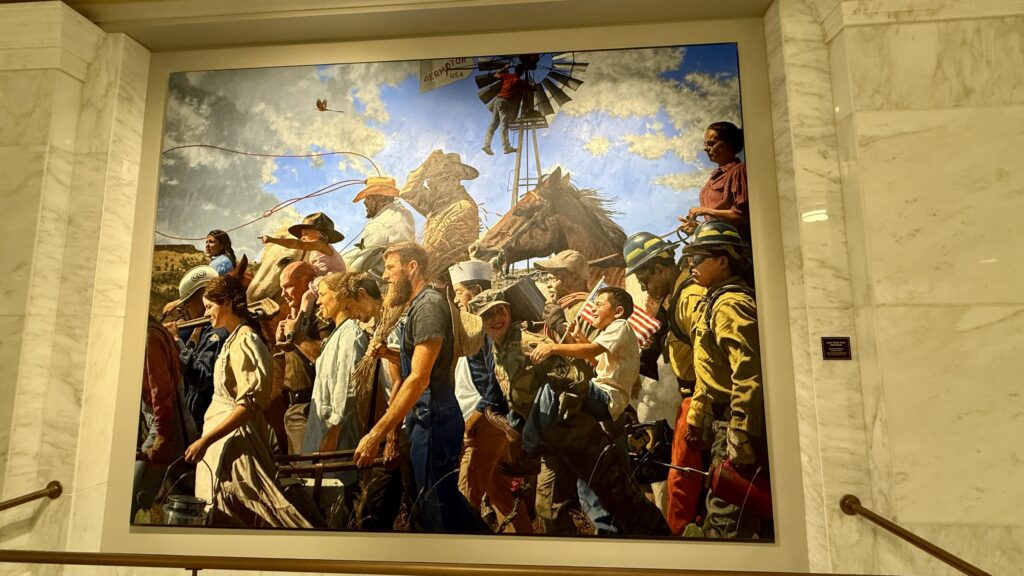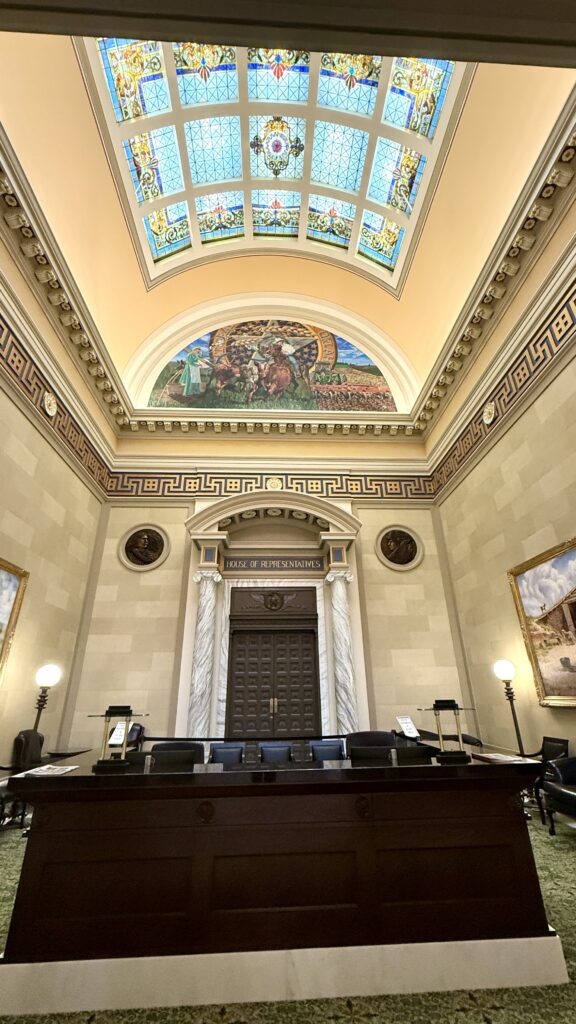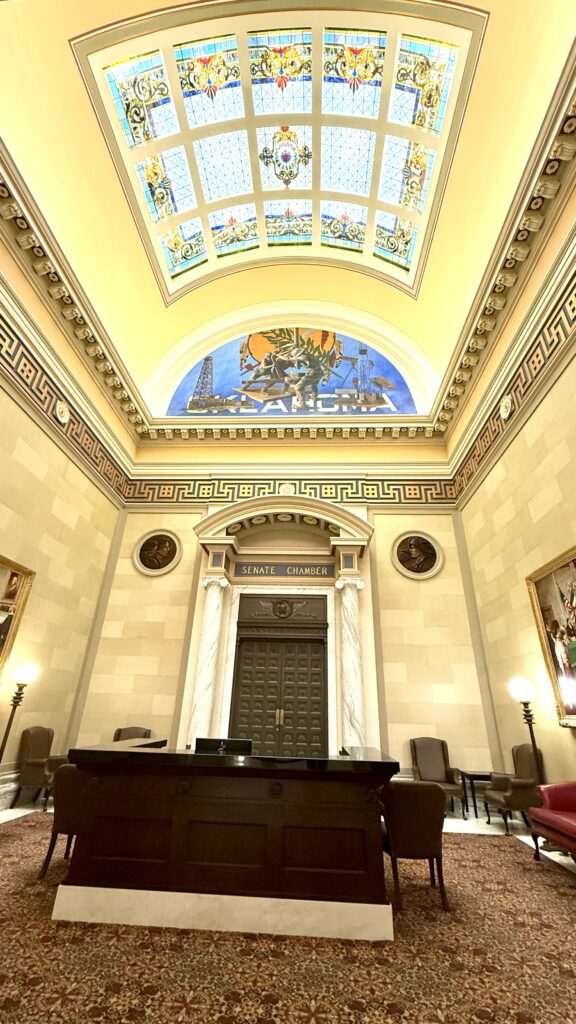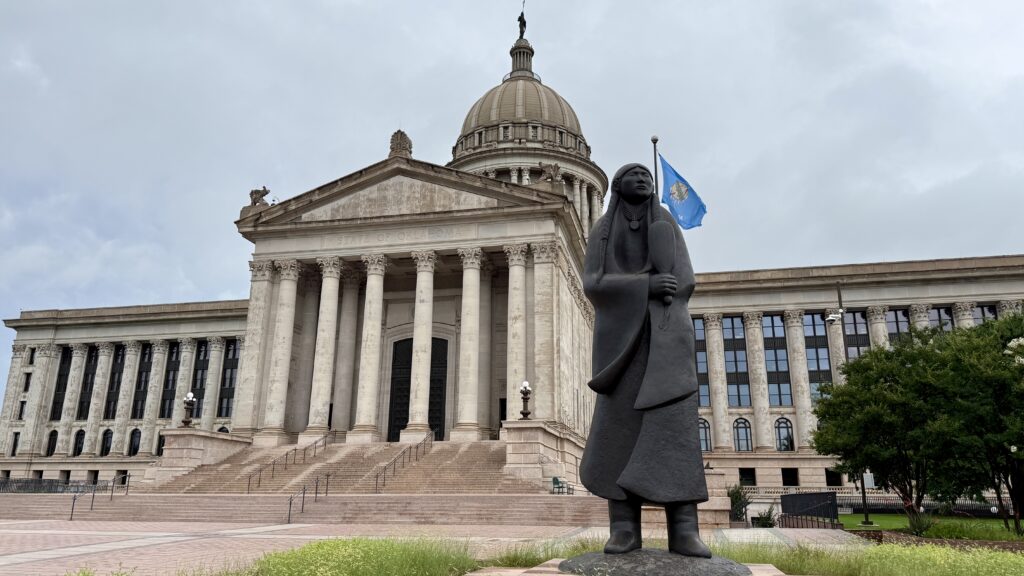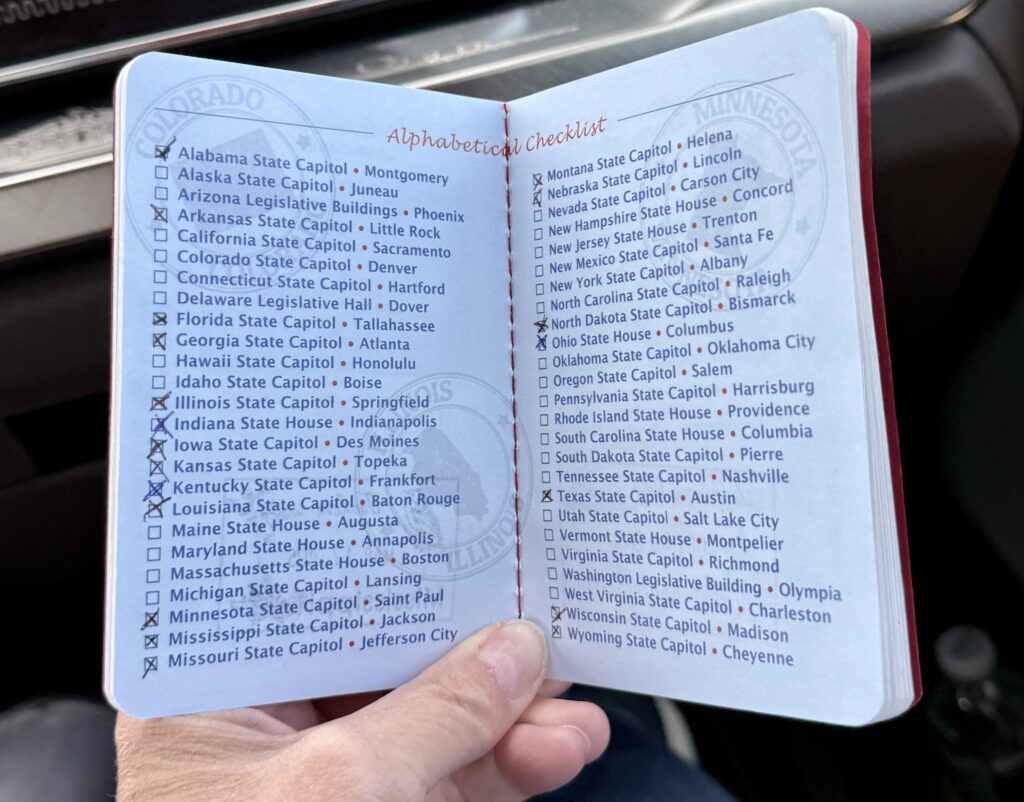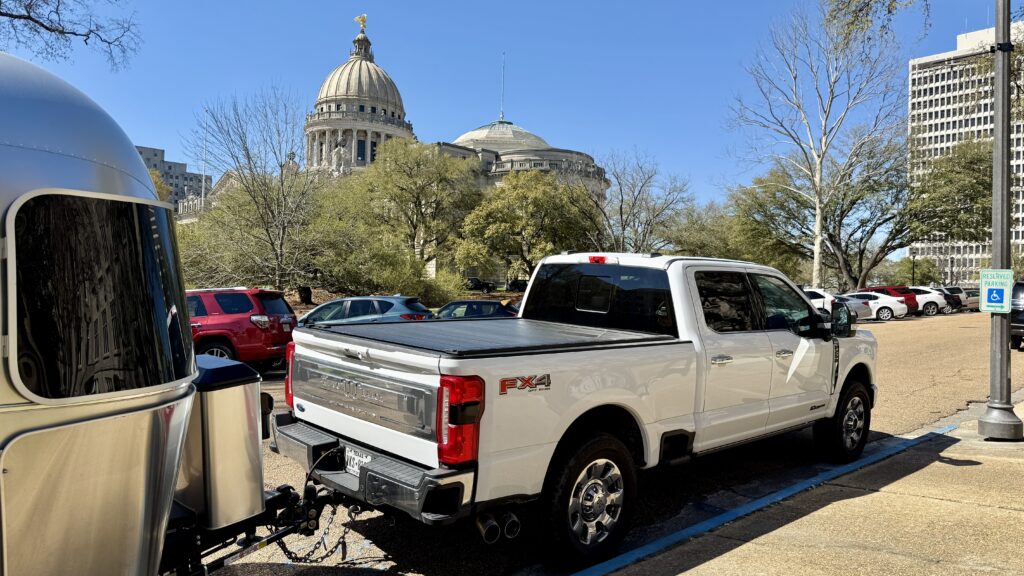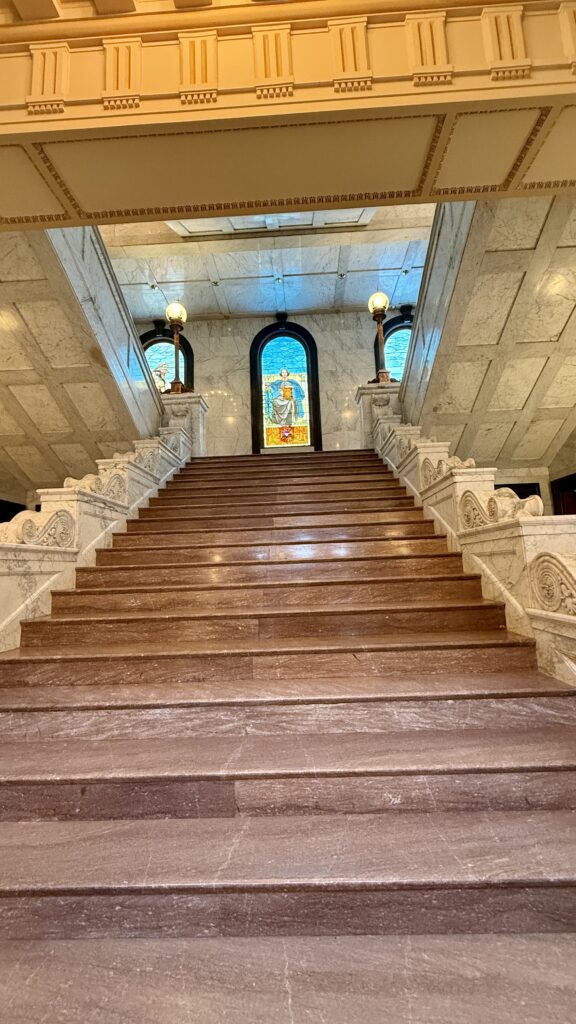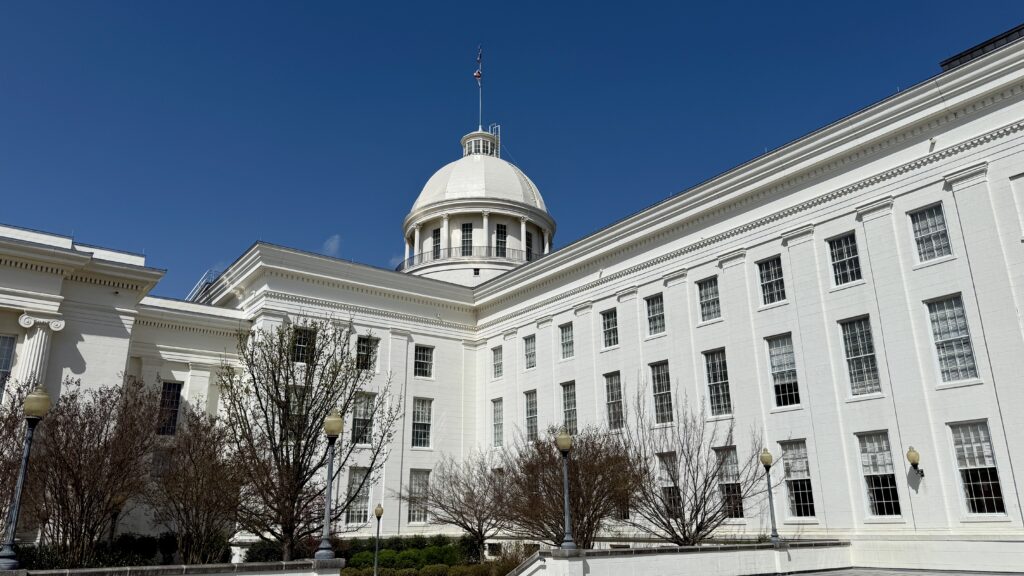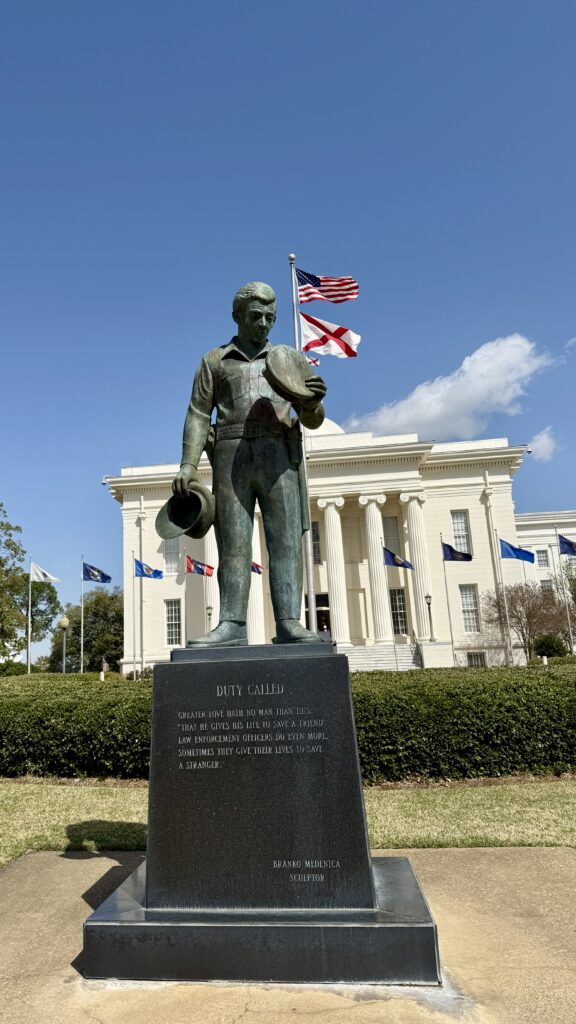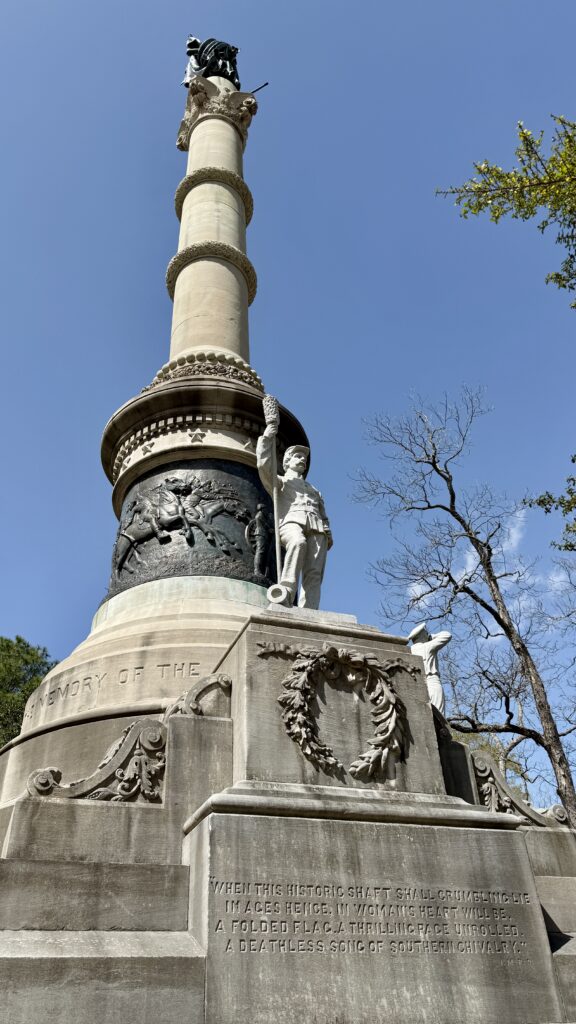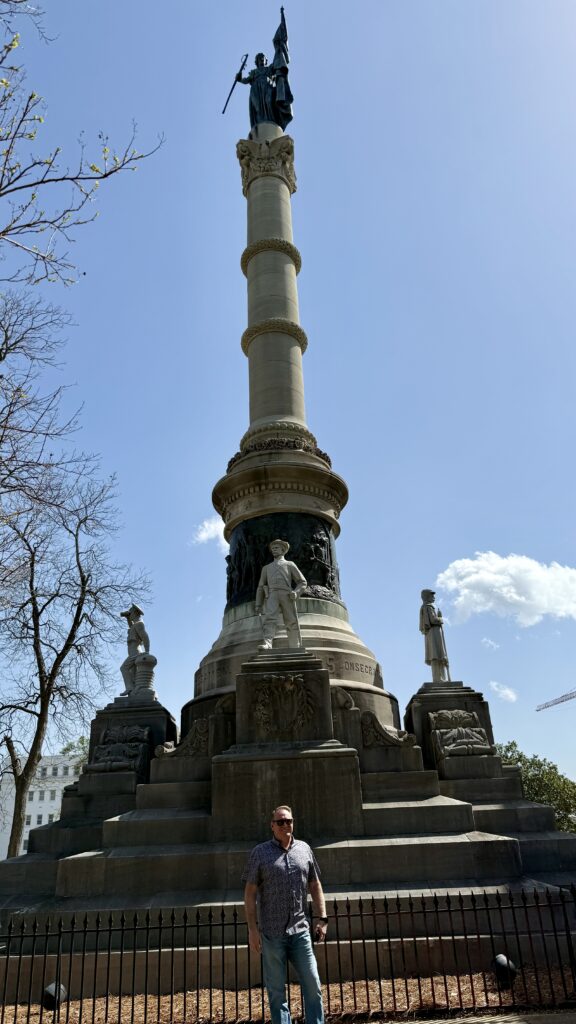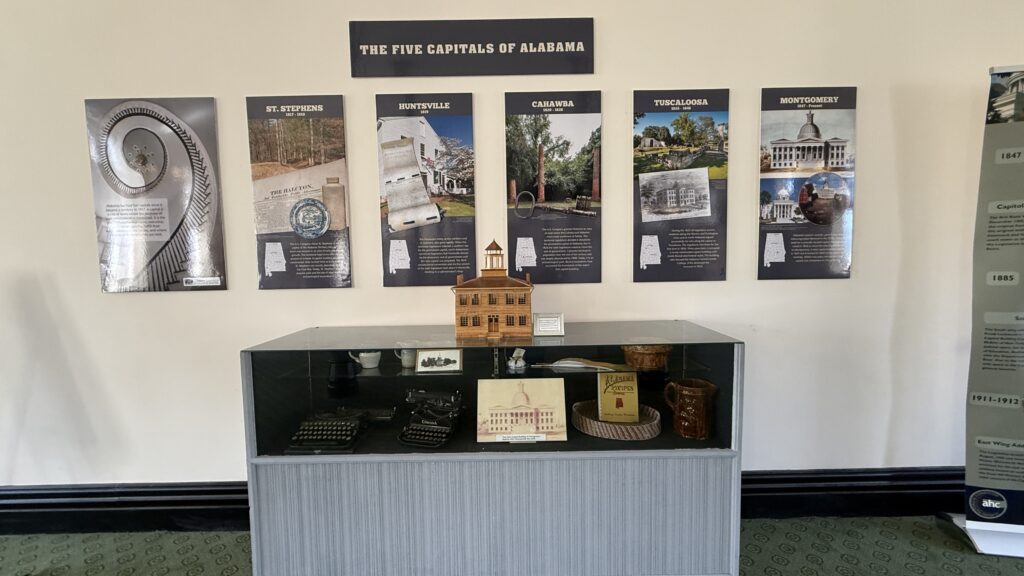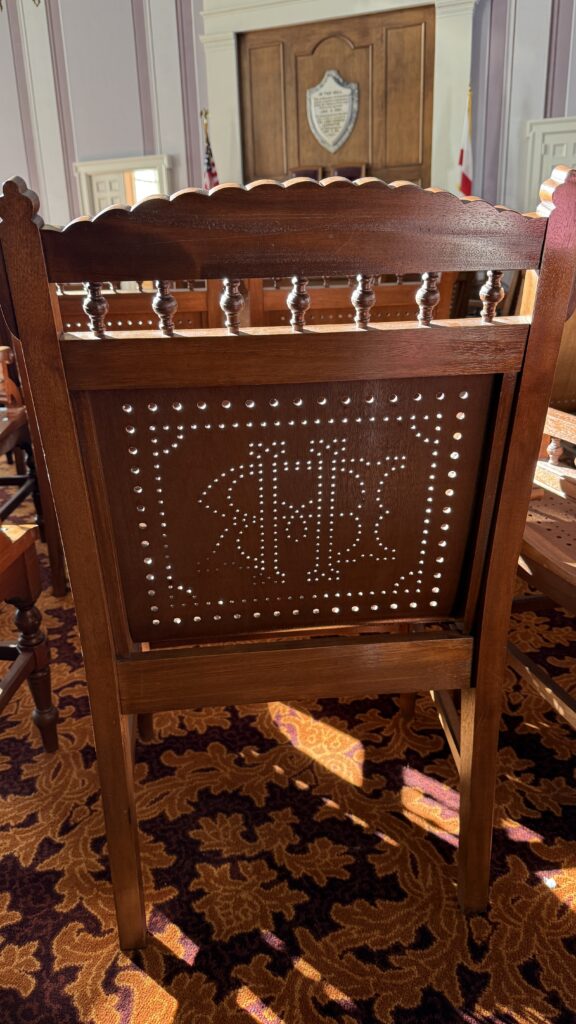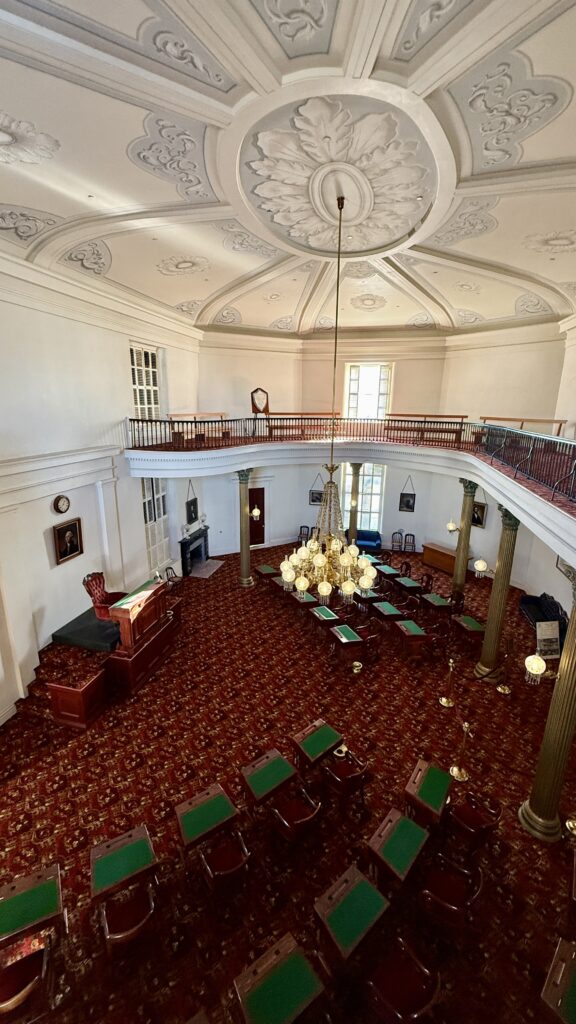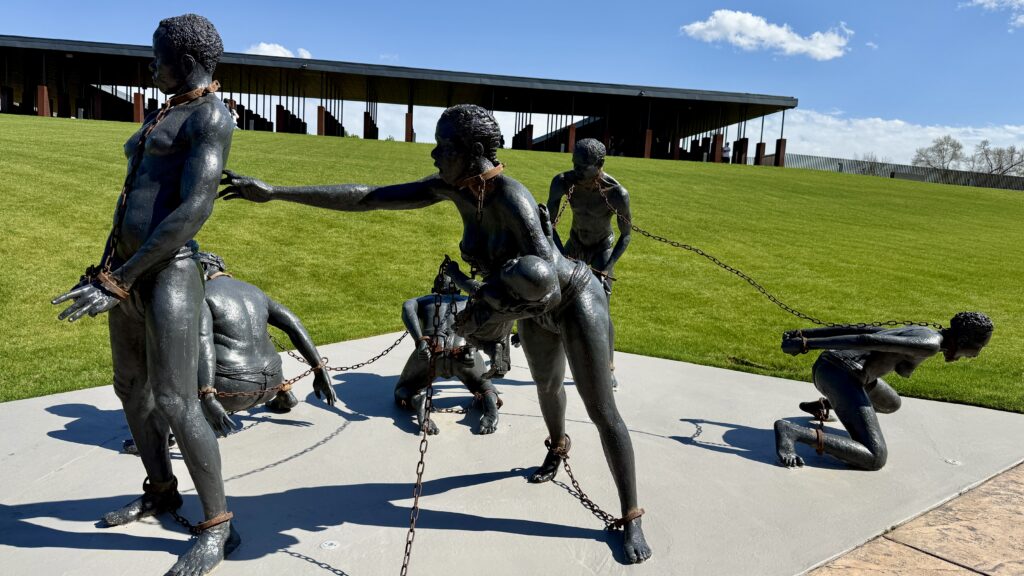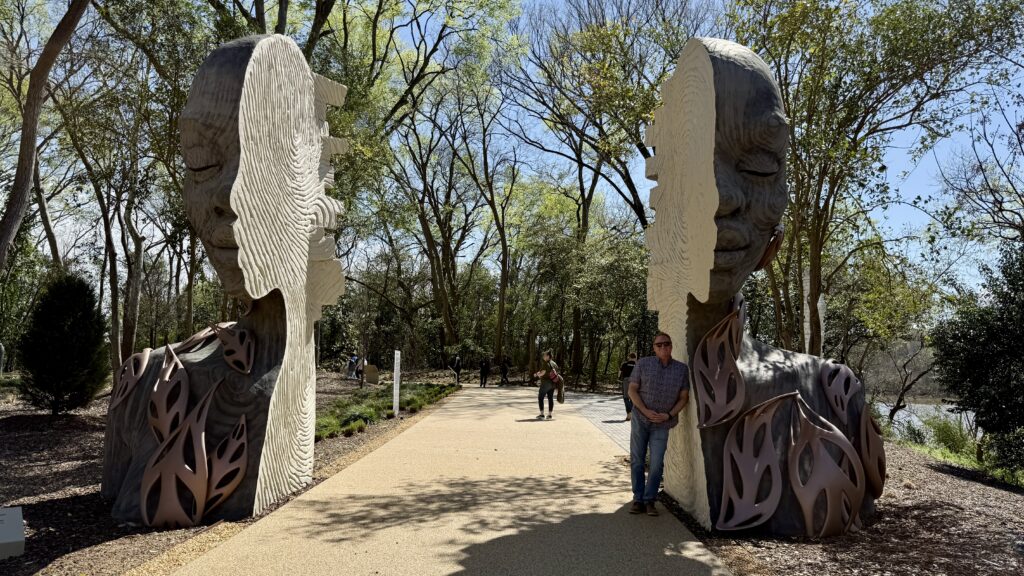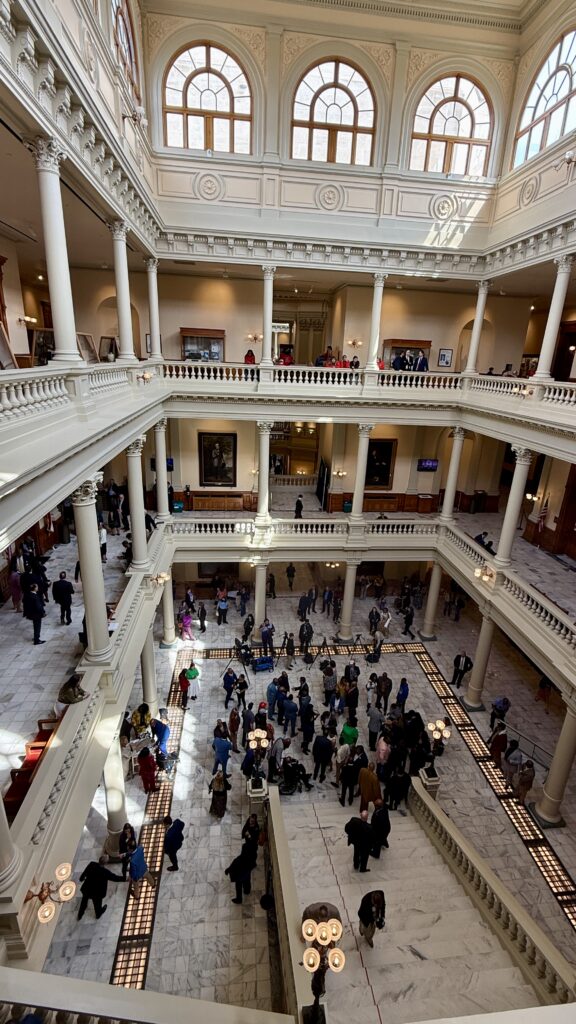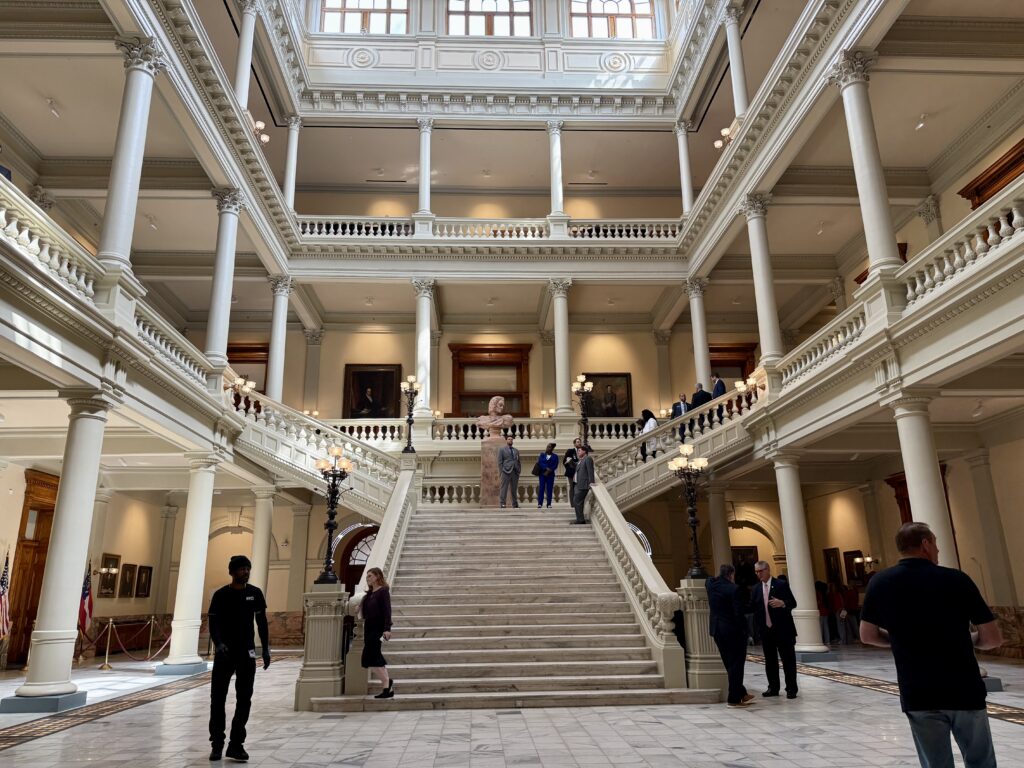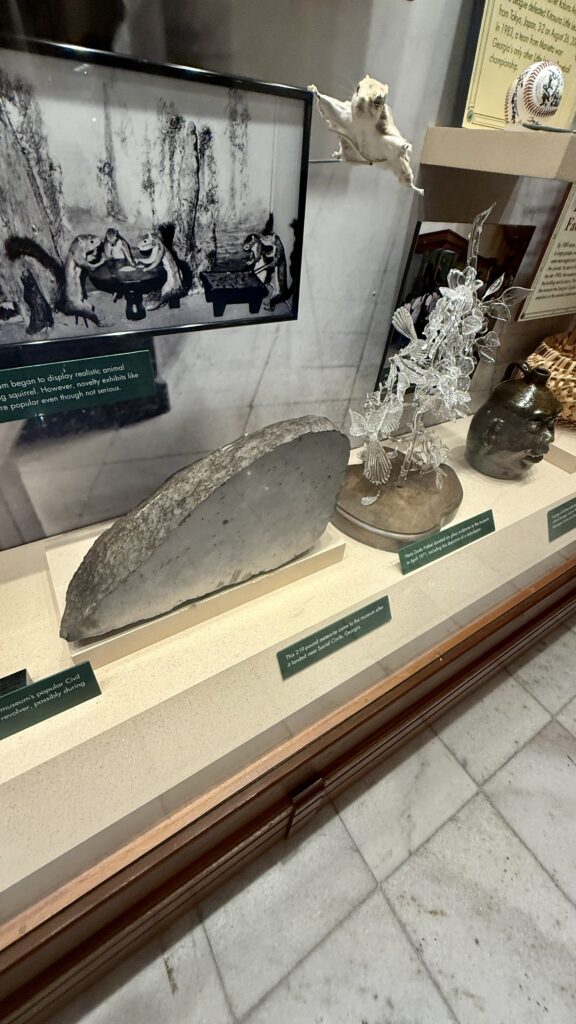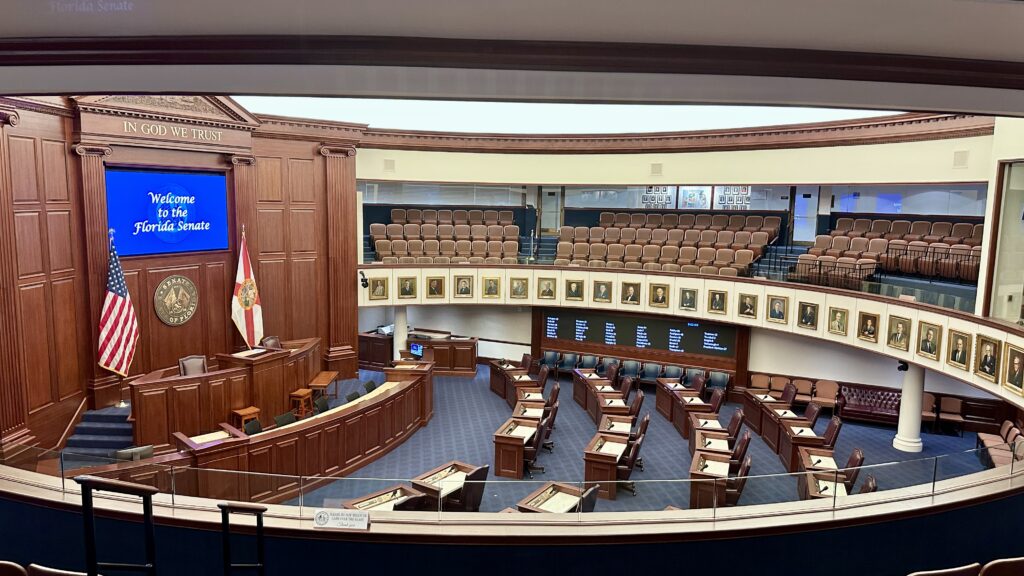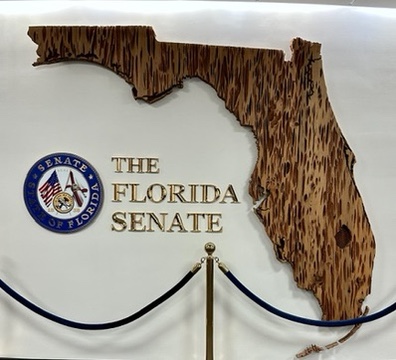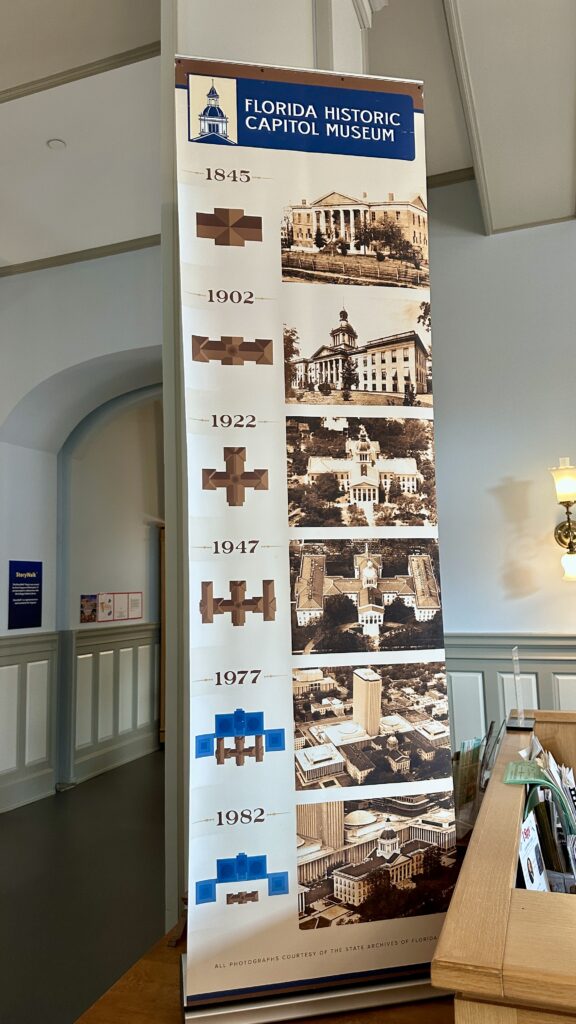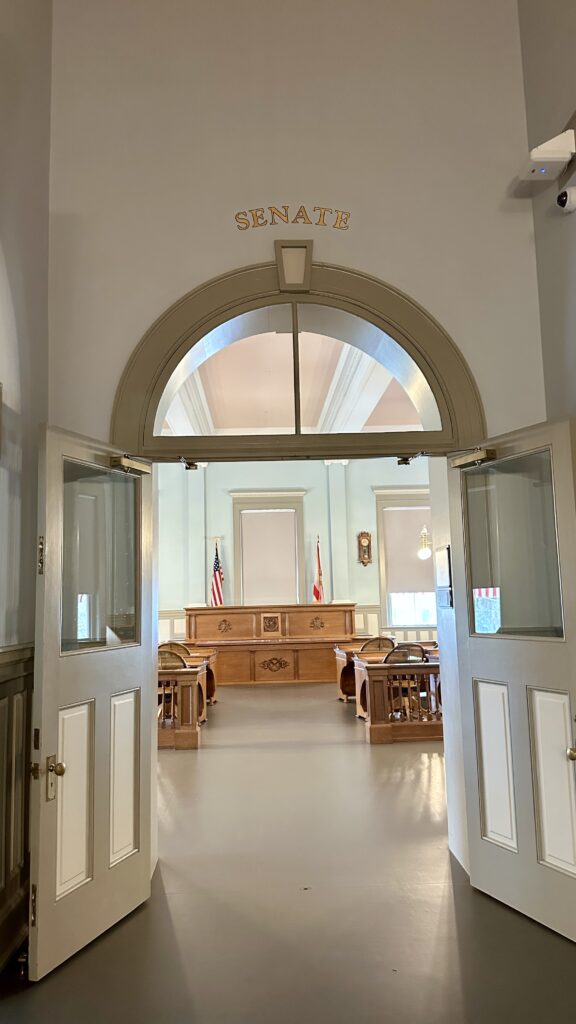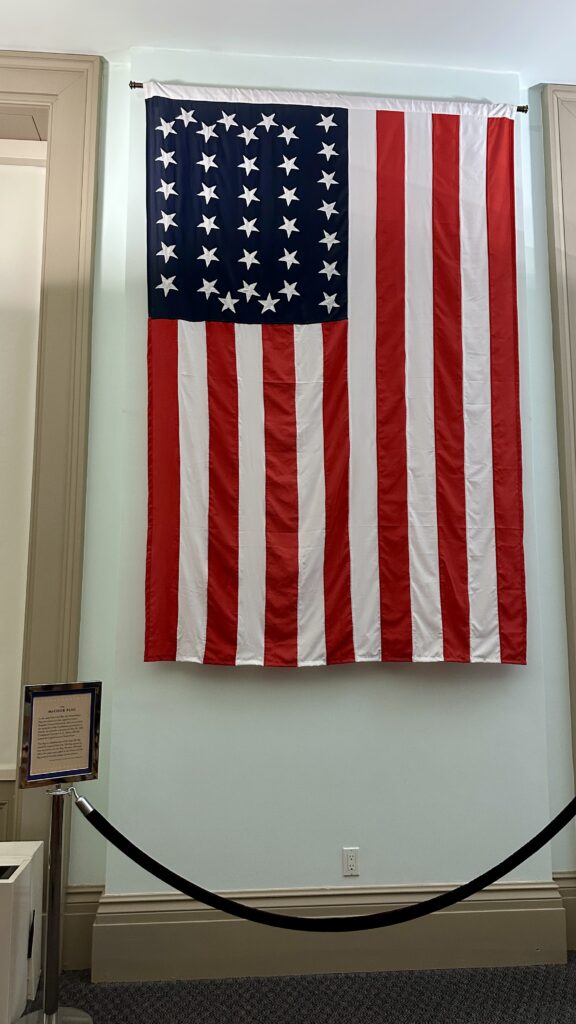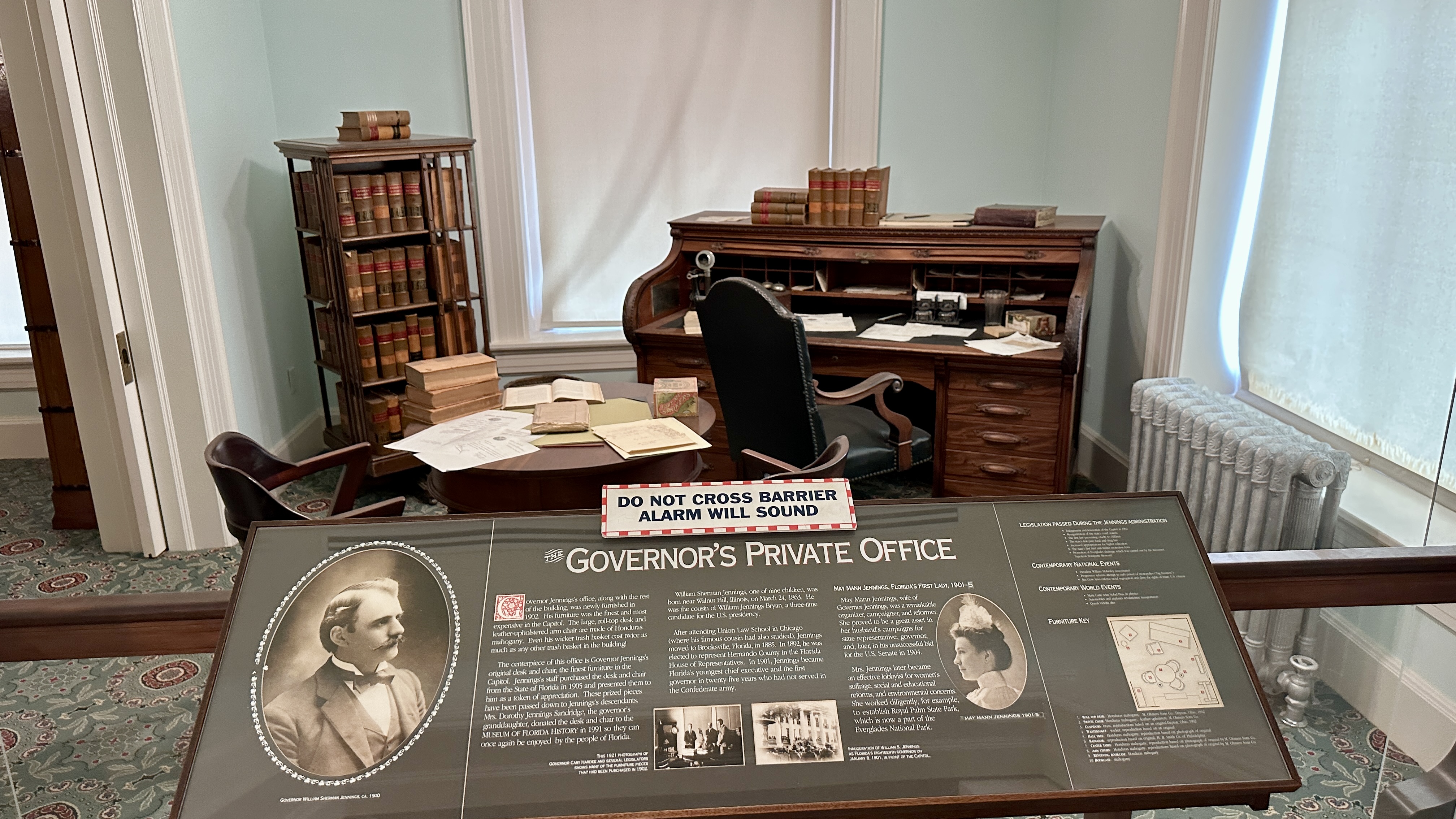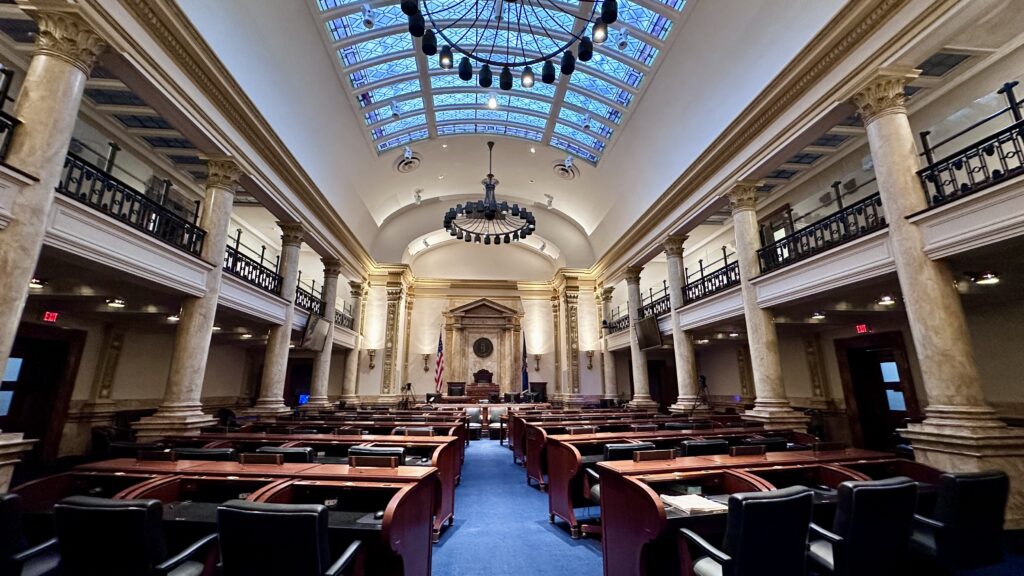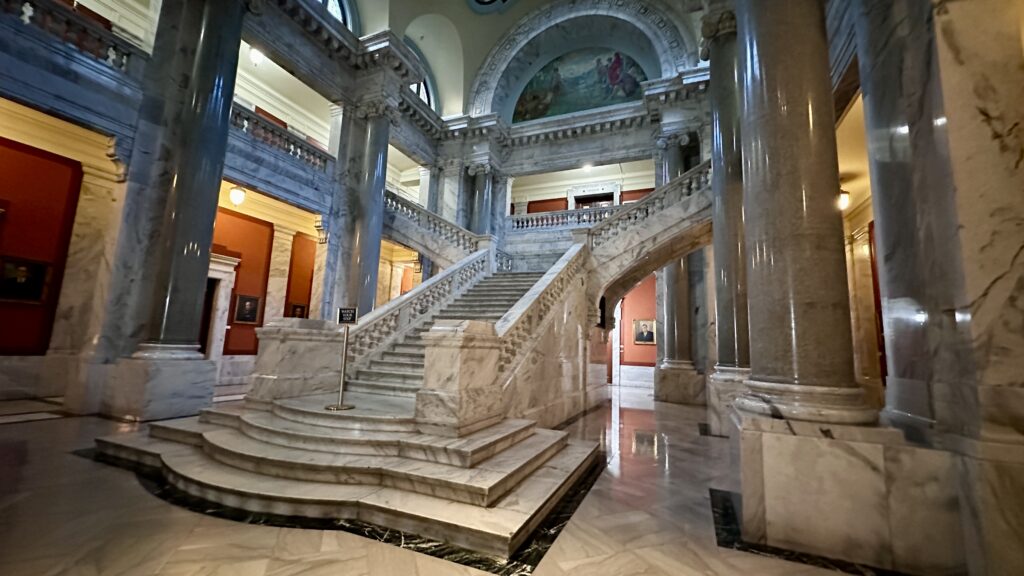
August 29, 2025. Albany New York. (And a little Hyde Park to go with it.)
We are officially half-way through our State Capitol bucket list! Another stamp made its way into our passport, making this State Capitol tour number 25!
You won’t want to miss this tour! It is filled with stories of intrigue, corruption, calamity, hauntings, prisoners, and some architectural eclecticism. It took a while to pull all this information together as recording is not permitted in the Capitol. I hope you enjoy reading it as much as I enjoyed re-visiting the Capitol through my research.
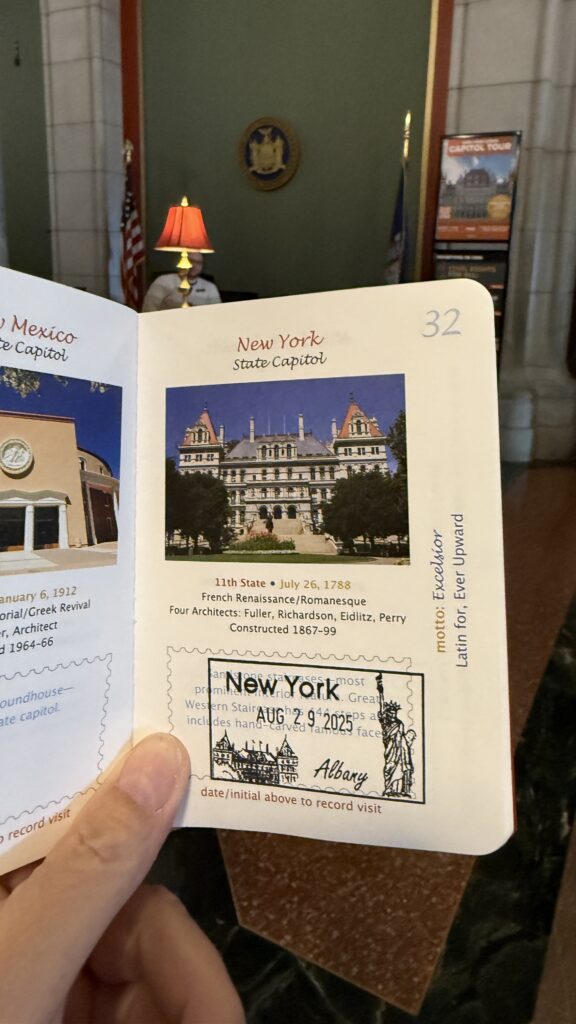
This State Capitol is…unique. But hey, isn’t all of New York? It has a lot of interesting “Easter Eggs,” pointed out by our tour guide, for example the Westchester marble, hand cut by Sing Sing prisoners; medieval, gothic, Islamic, and Renaissance themes; intricate carvings along the staircase and throughout the chambers. When work began, electric lighting did not exist, but by the 1880s the Capitol was one of the first public buildings in America to have electricity.
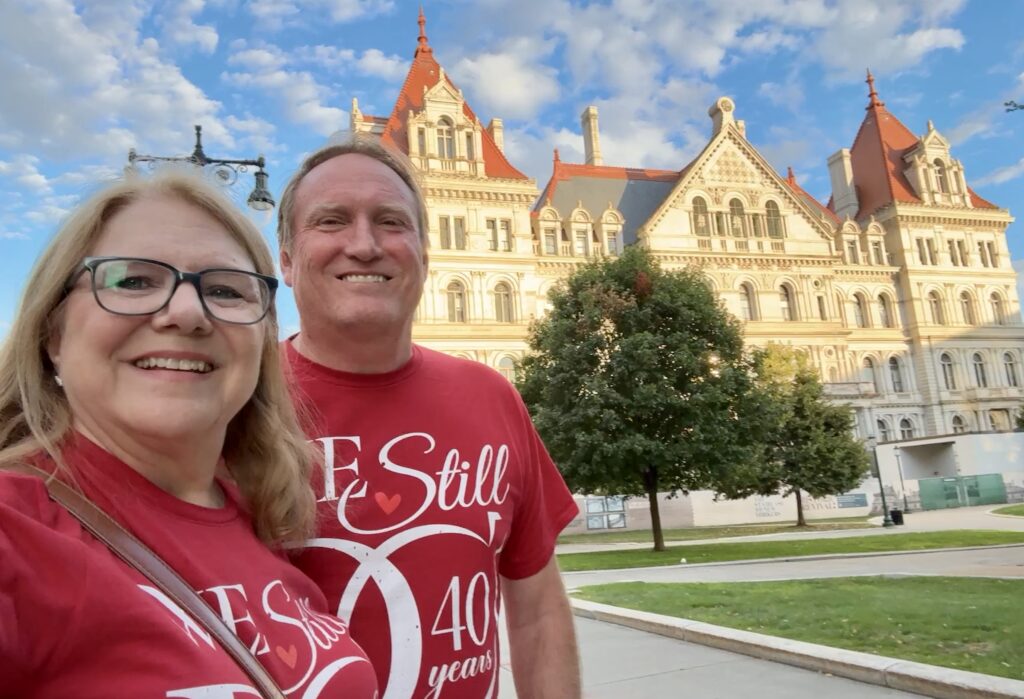
We didn’t get to experience the paranormal, even though we chose an evening tour which they offer during the months of July and August. The tour was well attended in our group. Choosing this tour gave us time to do other things during the day and save what we thought would be “the best” for last.
What were those “other things“? I’m glad you asked!
Unfortunately, time and space do not permit me to go into all of the details in this blog, but I can’t prevent myself from including a few pictures of some sites we saw in Hyde Park, with the owner of these establishments welcoming you personally. Join my high society friends from the Gilded Age, as well as our glimpse into the 1940s. (Feel free to scroll down to the picture of the Capitol if you want to skip this part, but you will truly miss out!)
Hyde Park
Welcome to the Vanderbilt Mansion, Dahling
I would be most gratified in welcoming you to our home for an evening replete with stimulating discourse and the finest of dining, as is customary among our circle.
Upon the occasion that Mr. Tim was engaged with affairs of commerce via his telephonic apparatus, Mrs. Cindy availed herself of the privilege to sojourn to our esteemed Vanderbilt Mansion in Hyde Park. Imagine her delight to discover that, as a holder of the distinguished America the Beautiful National Park Pass, she was granted complimentary entrance to our revered National Historic Site.
Should one intend to frequent the splendid establishments of our nation’s parks, I assure you, acquiring such a pass is most prudent and shall serve you well. Otherwise, one must remit a modest sum of $15.00 to gain admittance—an entirely reasonable tariff, I should think—for no guest is permitted to traverse the mansion unescorted; a proper tour guide is requisite, and Mrs. Cindy was fortuitous indeed to arrive precisely as the tour commenced.
Vanderbilt Mansion, Hyde Park, New York—their beloved Hyde Park Estate—serves as a retreat, a sanctuary for the seasons, rather than a domicile for the entire year for Frederick and Louise.
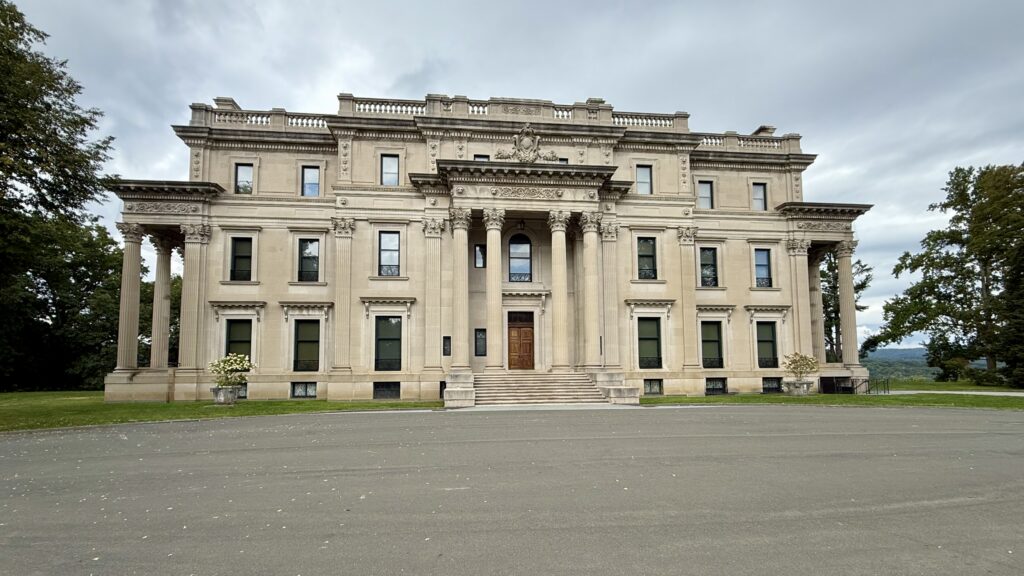
We affectionately refer to this stately abode as our “summer cottage,” though your tour guide may find such a term risible given its grand proportions and opulent surroundings. Hyde Park is but one jewel in the diadem of our country homes along the graceful Hudson, complemented by our resplendent townhouse in New York City; seaside haven in Bar Harbor, Maine; and the celebrated “cottages” of Newport, Rhode Island. Our proclivities for travel extend even to the refined salons and estates of Europe.
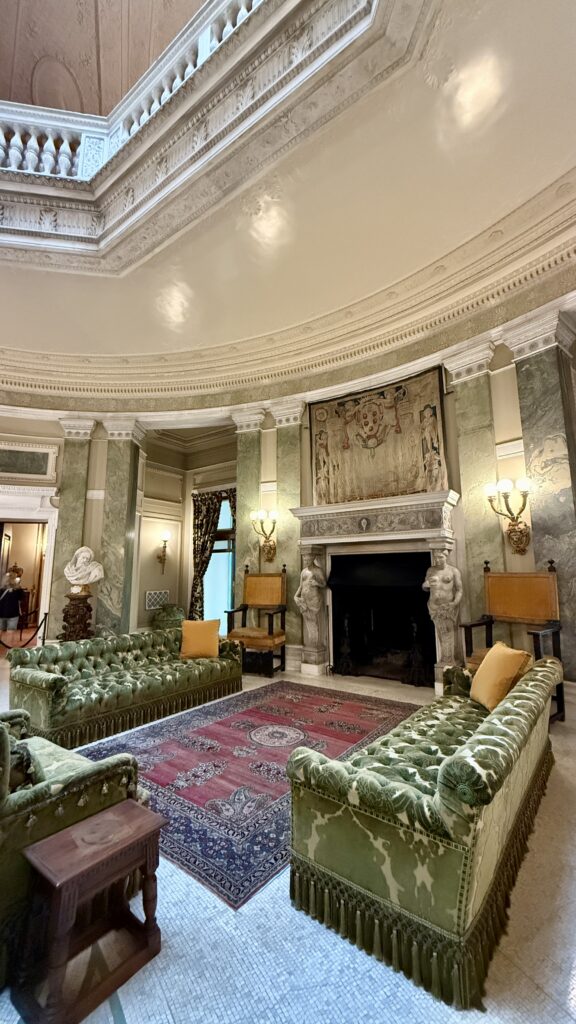
The Grand Hall Entry, reserved for greeting esteemed guests such as yourself, directs one first to the washroom, discreetly situated just beyond the corner. Upon crossing the threshold of the mansion, one is enveloped by an ambiance intended to astonish and delight.
The hall itself soars to a height of two stories, adorned with lustrous marble floors, Corinthian columns of noble bearing, and intricate plasterwork of exquisite detail. Such grandeur was conceived to evoke the majesty of a European palace, drawing inspiration from the finest Italian Renaissance architecture, and thus, leaving a most favorable impression upon every guest who graces the threshold.
Pray, forgive me, dearest guest, for I must withdraw to attend to my toilette in anticipation of this evening’s repast.
Franklin Delano Roosevelt Presidential Library and Museum
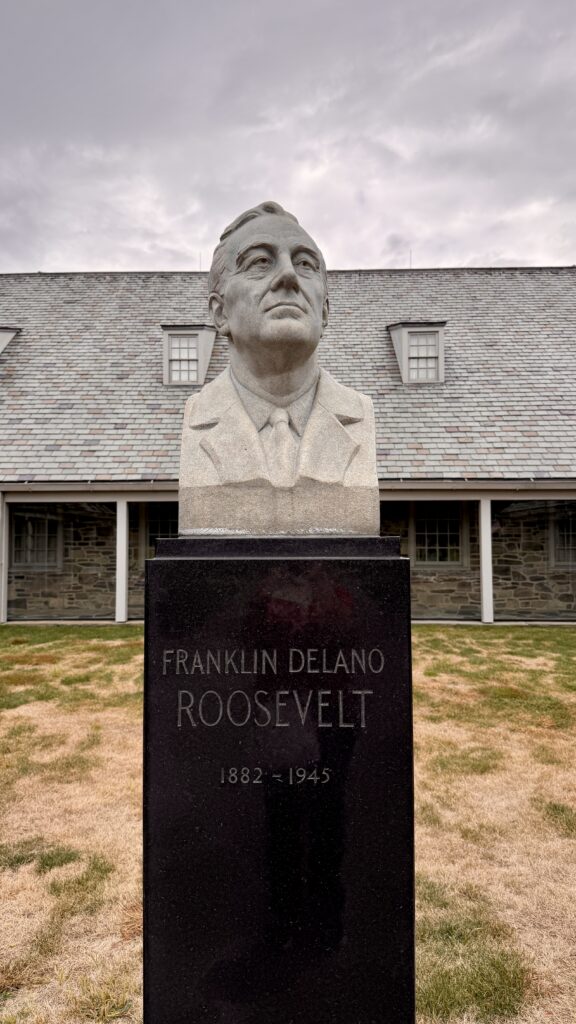
Permit me to share a personal reflection, dear friends. The museum bearing my name—the Franklin Delano Roosevelt Presidential Museum—was, in fact, the very first of its kind ever constructed. It stands, quite fittingly, as a designated National Historic Site, echoing the enduring spirit and heritage of our nation. I am heartened to know that, even as annual memberships lapse, so many visitors—such as yourselves—are able to enter without charge, thanks to the privileges of the America the Beautiful Access Pass. Such unexpected generosity is always a welcome surprise to many of our guests. I firmly believe that access to the rich tapestry of American history and the grandeur of our natural landscapes should be within reach for all, so that each citizen may appreciate firsthand the legacy we collectively share, without the burden of frequent admission fees.
Thank you for that eloquent introduction, President Roosevelt! It was an honor to visit your Presidential Library and Museum.
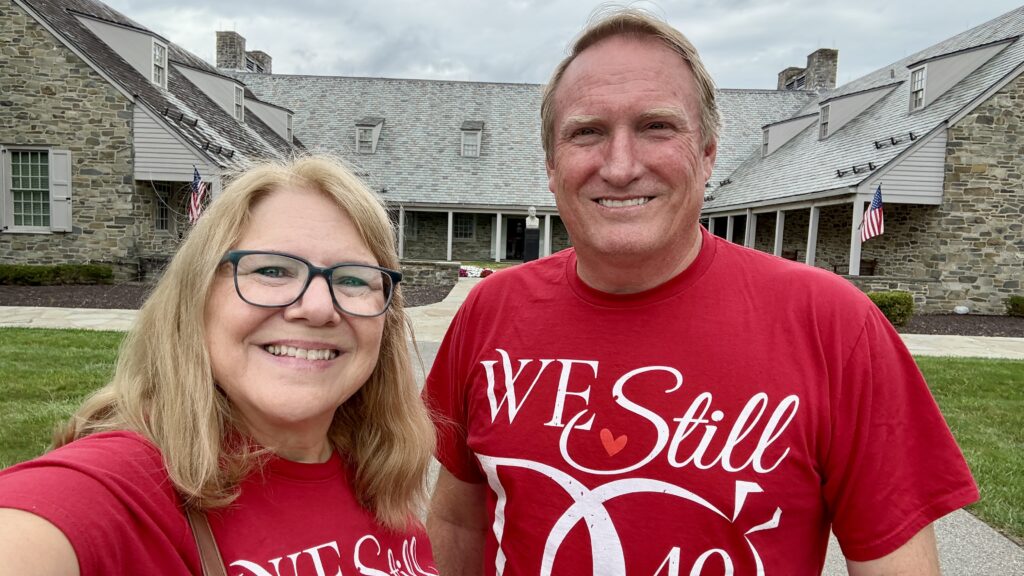
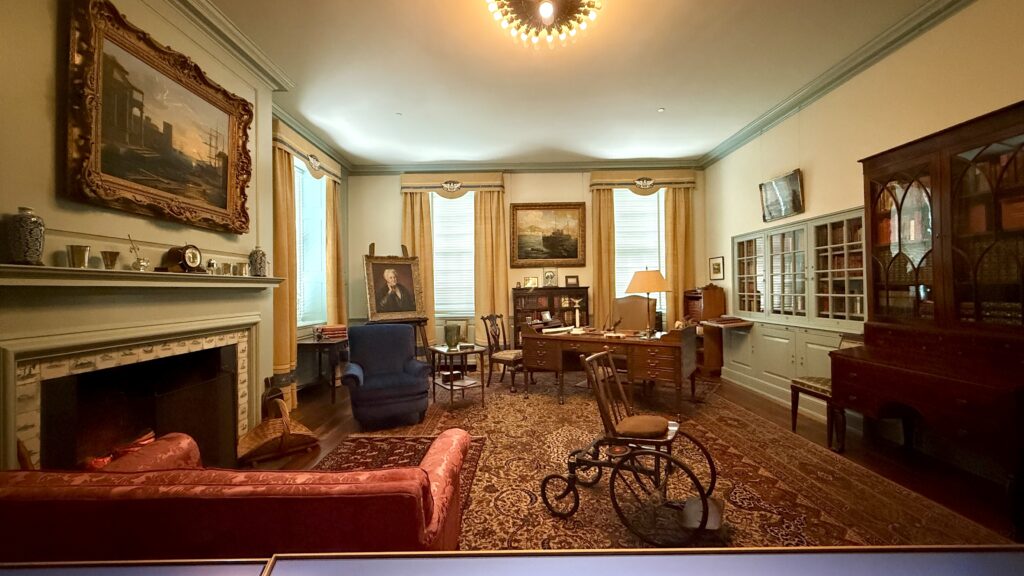
New York State Capitol
And now, the stories we’ve all been waiting for! Buckle up buttercup. There’s a lot of quicksand, er–ground–to cover in this one!
A Bit of New York History Sets the Stage.
New York was one of the original Thirteen Colonies on the east coast of North America, and was admitted as a state on July 26, 1788. Legislature met in various locations until 1797 when Albany was declared the State Capitol. A building was raised and then the old capitol was replaced by this one. The Old State Capitol no longer stands in Albany, as it was demolished in 1883; the land is now part of the East Capitol Park.

The Architects.
The current unique and exquisite Capitol in the State of New York was designed by five different architects. This is a bit of an anomaly for State Capitols, but each one kept running into debt, missing deadlines, and experiencing massive construction issues, so the Governors and other powers-that-be at their time of leadership released one in favor of another.
When the construction started in 1867, Reuben E. Fenton was the governor of New York. He was the 22nd Governor and was only in office for the first year of construction. However, eleven more Governors would be elected before building on the Capitol would stop. (Even then it remained incomplete, and is still left unfinished to this day.) I am including this piece of history because Fenton was responsible for overseeing the early construction of the building, yet it is interesting to see how each subsequent governor wanted to have a hand in the overall work.
In 1899, when Theodore Roosevelt became the 33rd Governor of New York, he deemed the construction of the Capitol complete and halted any further work. Crafters stopped in the middle of their stone work, which the tour guide pointed out to us in one of the chambers. Big blocks of stone meant to be carved into framing around the room remain as mere blocks next to beautiful filigree, flowers, and other carvings, as stone carvers were sent home before they finished the job.
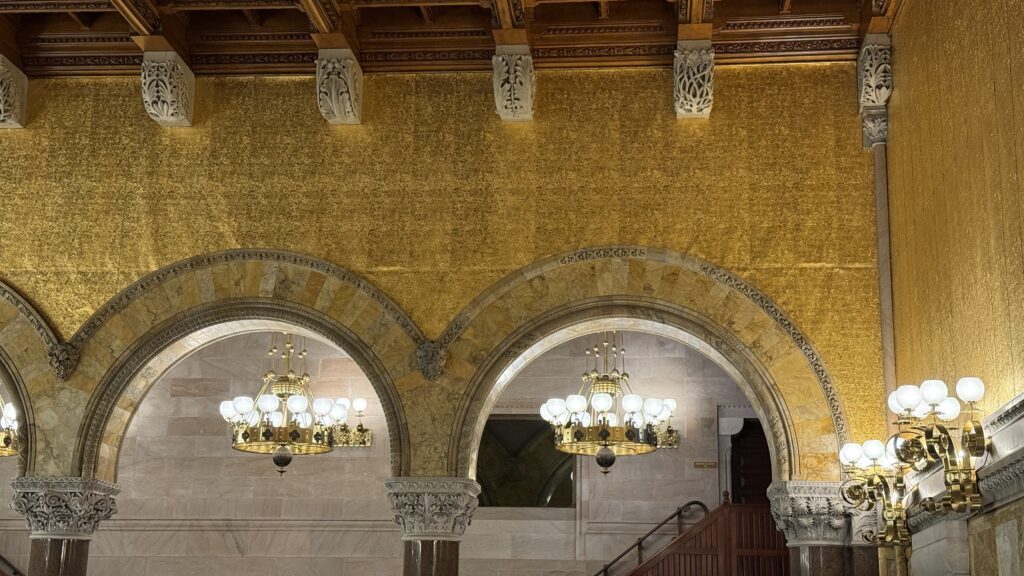
The stone carving over the right arch in the Senate Chambers is a prime example of work that simply stopped mid-carving.
The Capitol was built by hand, with hand-carved stone that came from various part of the United States and around the world. Grover Cleveland was the 31st Governor. He hired Isaac Perry, the last of the architects who also led the building to its final form.
Hauntings.
Haunted? Many people think so. They even host haunted tours to “prove” it. The building was designed to look like a castle from the middle ages, with carvings of grotesques, The Green Man, and even a demon that is said to have placed a curse on the building. Perhaps the nature of the carvings lead people to believe it is haunted. Or, it could be due to the apparitions and sounds of chains frequently seen and heard by guests and staff.
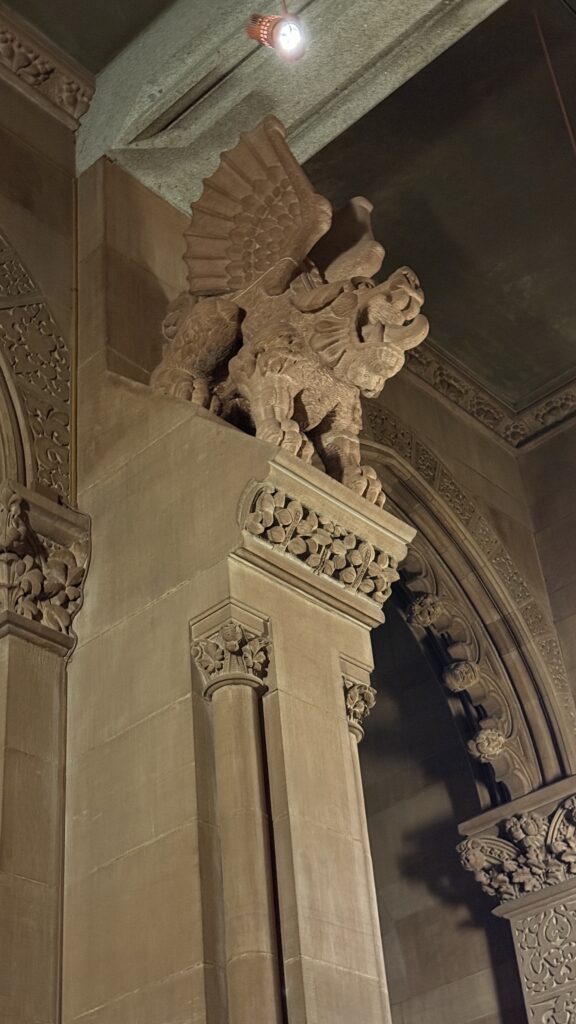

The Capitol endured a fire in 1911, attributed to the curse of the demon. The fire destroyed nearly all of the library filled with rare historic documents that cannot be replaced, and the beloved night watchman lost his life as well. His body was not discovered until two days later, covered in ash from the fire. They recently installed a plaque to memorialize the watchman, partly because people wanted to honor him, and perhaps also because others were concerned that he continues to haunt the place. Also, a suicide occurred inside the building when a business owner lost his business during the depression, and people sometimes feel his presence when standing at the place where he died.
What do you think? Can a building be haunted? 👻
Let’s rewind the time clock a bit.
This bit of history is enough to make anyone say, “woah!” Even if you don’t like history, hopefully I have captured your attention if you are still with me.
Construction on the building began in 1867 as stated earlier, when the first architect (Thomas Fuller) won the bid with a guarantee to build it in 4 years with $4 million dollars. Remember those numbers. 4 years, $4 million.
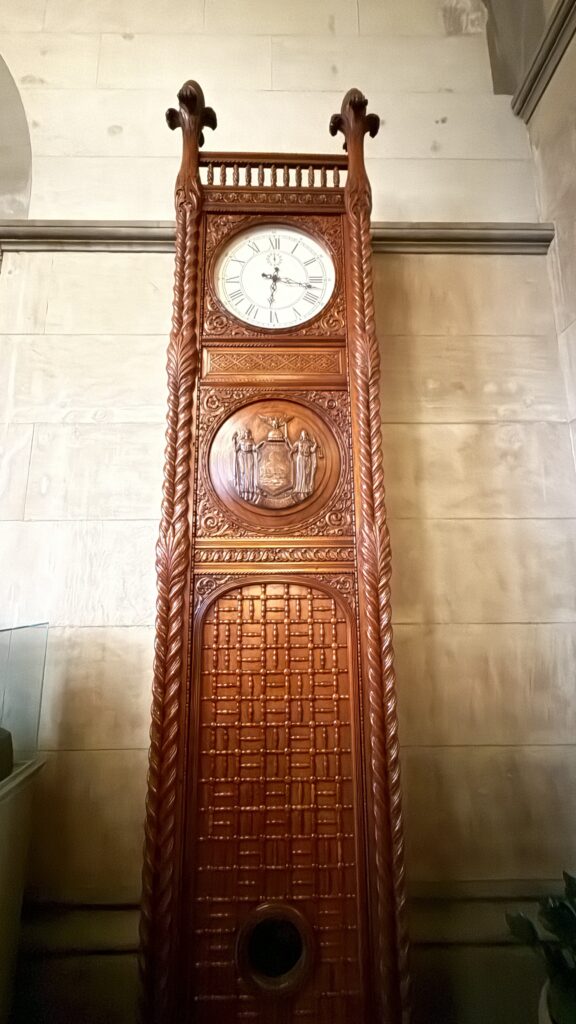
Much to his chagrin, Fuller encountered serious engineering and financial problems. In Fuller’s defense, he witnessed some very strange things he never experienced on any of the major projects he had previously completed in Canada (like the Parliament Buildings in Ottawa) or elsewhere. As the foundation for the Capitol was poured, it quickly disappeared over and over and over again; they later discovered the building was being constructed on unstable ground, originally quicksand.
Can you imagine the head scratches as they tried to figure that one out?! “We poured the foundation here yesterday! Where did it go?”
This problem required extensive excavation and replacement with clay and concrete. Building the Capitol was a challenge as it was built with five-feet-thick, load-bearing masonry walls. Fuller is credited with finishing the first floor in the Classical/Romanesque style, but after 10 years and $10 million dollars already spent (not 4 years and $4 million as promised) with nowhere close to a building completion, the Lieutenant Governor at the time dismissed him (can we just say “fired” already?) and hired the second and third architects (Leopold Eidlitz and Henry Hobson Richardson), who built the next two floors in a Renaissance Classical style.

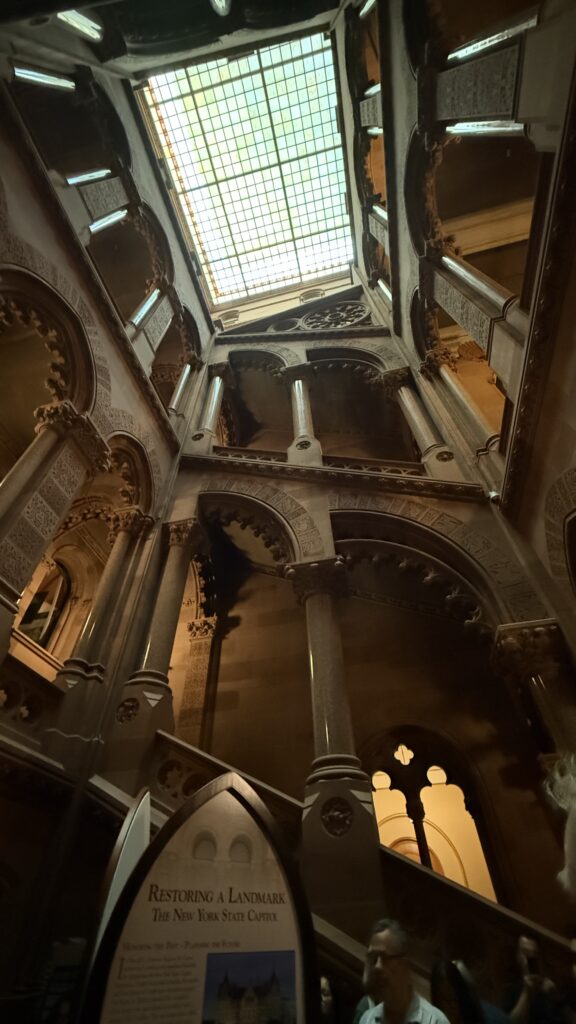
Our tour guide on the first floor.
It is claimed Richardson was imitating the Hôtel de Ville (City Hall) in Paris, France. The legislative chambers, the fourth floor and roof work were all finished in Victorian-modified Romanesque that was distinctively Richardson’s design. “Richardson dominated the final outcome of the grand building, which evolved into his distinguished Romanesque style” (it later came to be known as Richardsonian Romanesque).
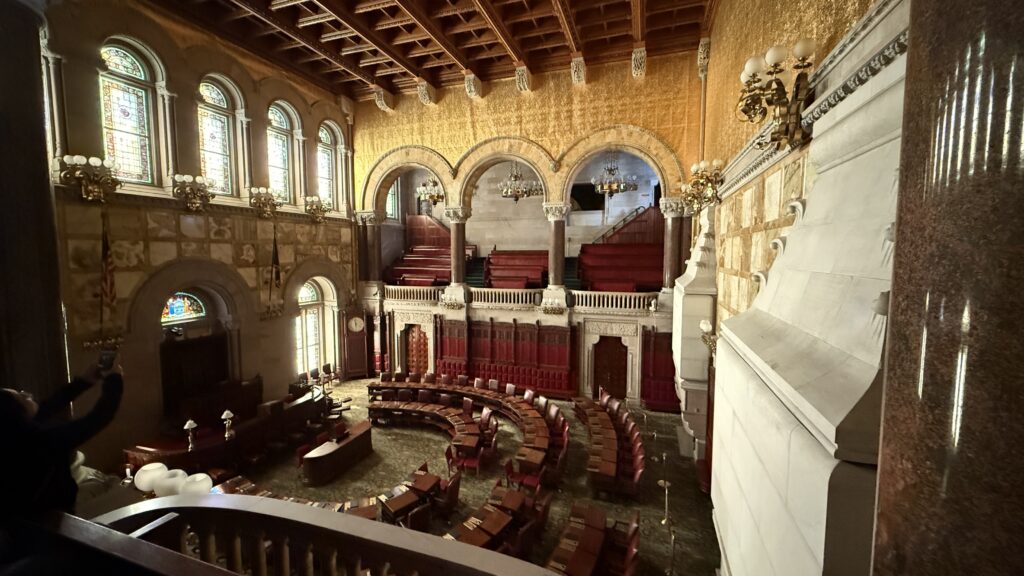
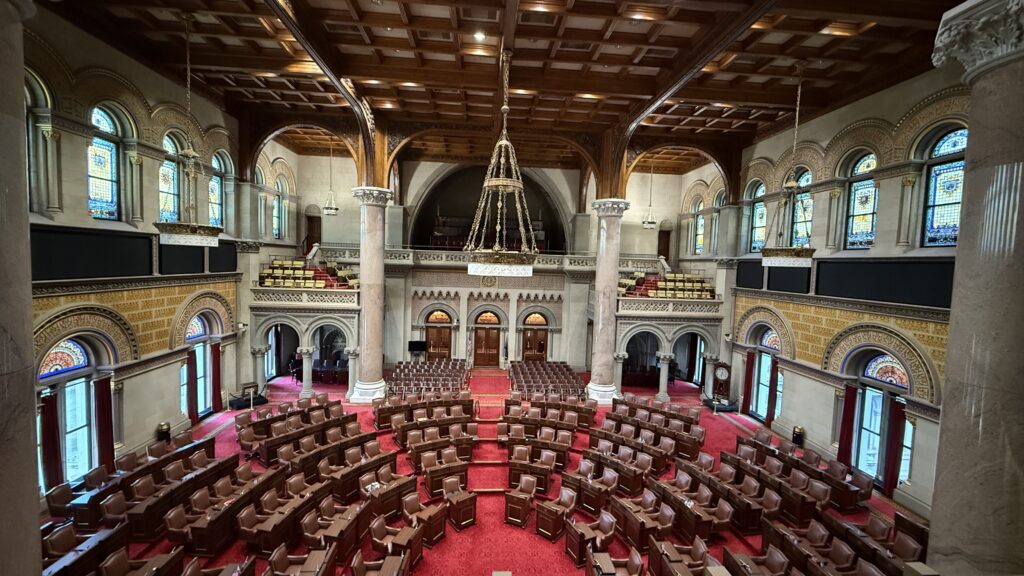

The Assembly chamber was originally designed with the world’s largest open arched span, with two murals by a renowned artist. The current version looks quite dissimilar to this one.
This picture is borrowed from the archives of the State Capitol.
Within one year after opening, assembly members started finding dust and even a large stone on their desks due to a structural issue with the vaulted ceiling. One ton of stone was removed and replaced with 60 tons. Throughout the 1880s, several investigations delved into the structural failure. In 1888, it was decided to remove the open arched ceiling and replace it with flat coffers. Unfortunately, the beautiful paintings by artist Hall were covered by the lowering of the ceiling, placing them out of public view forever.
Eidlitz and Richardson were also dismissed in 1883 (can we see a pattern?) by Grover Cleveland upon his election to governorship, and his review of the increasing costs of construction. He hired architect Isaac G. Perry to complete the project.
Another Scandal
Rumors had surfaced that the contractor on the coffered ceiling in the Assembly had used paper maché and painted it to look like wood instead of real oak panels, turning an enormous profit. It turned out the rumor was true, which was established after the fire of 1911. While it confirmed the scandal, the paper maché turned out to be a blessing in disguise. Firemen poured water into the assembly chamber to prevent the fire from spreading throughout the rest of the building, and the paper maché absorbed the water, fell in pieces from the ceiling, and saved this room from destruction. Again, things that make you go “hmmmm.”
The fifth and final architect, Frederick Law Olmsted, came on board later. He is responsible for designing the landscaping and outside surroundings of the Capitol, including Central Park and Prospect Park.
The Million Dollar Staircase
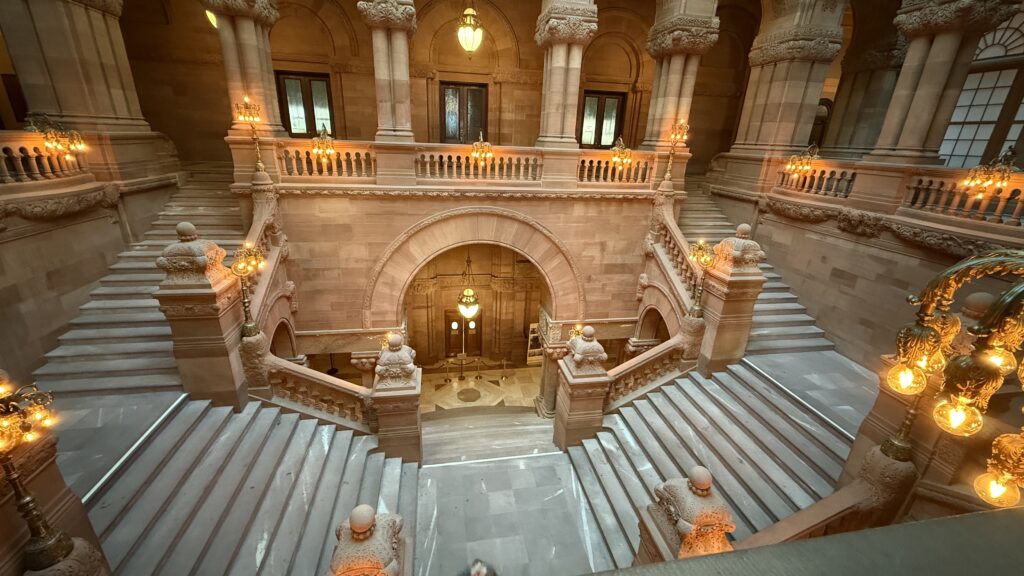
The Million Dollar Staircase is probably the most notable icon in the entire building. The work of art rightly earned its nickname given by the public because it cost $1.5 million dollars to construct. If you do a self-guided tour, be sure you look for it.
The Great Western Staircase, nicknamed the Million Dollar Staircase, was designed by architect H. H. Richardson to help stabilize the building. Richardson is a noteworthy architect. Wikipedia says, “along with Louis Sullivan and Frank Lloyd Wright, Richardson is one of ‘the recognized trinity of American architecture’.”
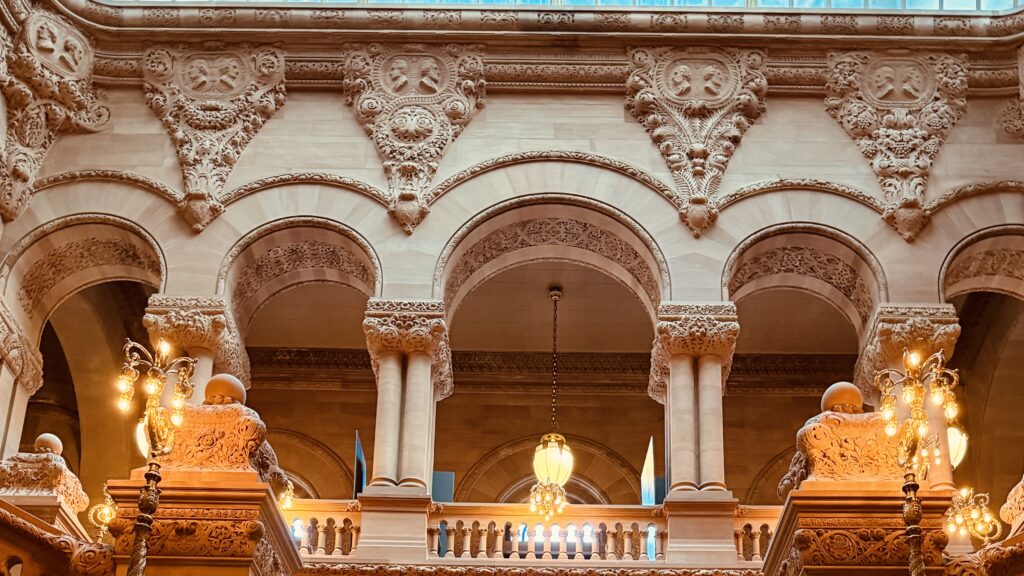
Structural problems arose during construction of the Capitol, but visionaries like Richardson call these opportunities. Stress fractures prevented the completion of a planned dome (which is why the building doesn’t have one), necessitating additional support measures. Thus the idea for The Great Western Staircase was born.

The staircase is not only structurally sound, a place to get from one floor to another, but it is also a work of art. The design was patterned after the staircase at the Opera House in Paris France. (Look it up and see if you notice the resemblance.)
The Staircase stands 120 feet tall and has 444 steps. It has a massive skylight dome ceiling, providing natural light during the early days of electricity as well as allowing for better airflow. You can also see the top of the Capitol building through the skylight.

The staircase was built of red sandstone imported from Scotland. The sandstone steps, however, were brought over from Medina in New York, famous for its use on the Brooklyn Bridge and Buckingham Palace. Sandstone is a soft stone which makes it easier to carve, but it hardens in the air over time, making it perfect for a functioning staircase and structure that has lasted well over a century.
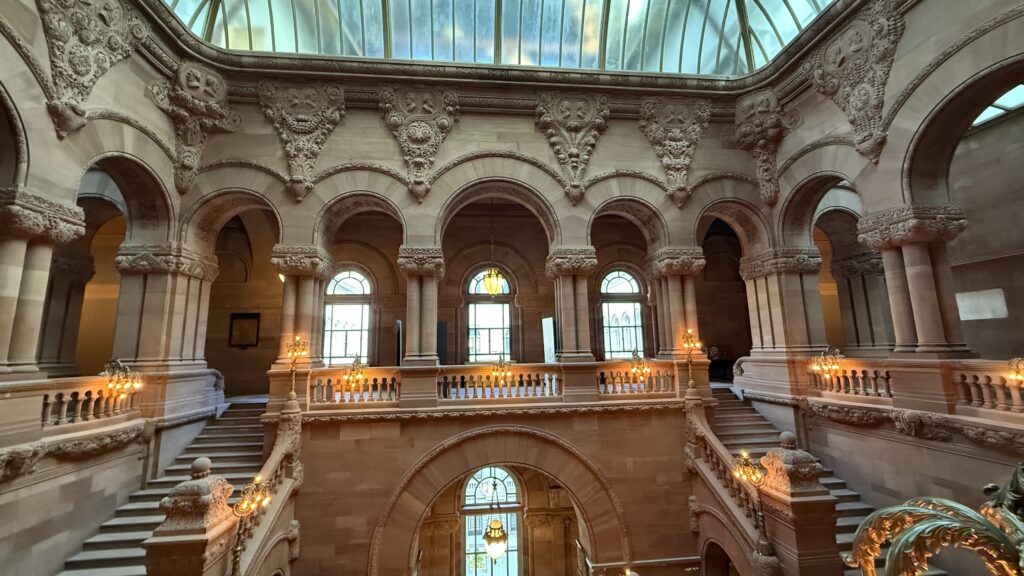
Sadly, Richardson died before the staircase was complete. Construction of the staircase began in 1884 and was completed fourteen years later in 1898 under the direction of architect Isaac Perry.
Governor Cleveland’s love of carvings can be seen throughout the Million Dollar Staircase. Architect Perry directed carvers to use their imagination with one caveat: never repeat any of the carvings. There are more than 500 stone carvings of people, mythological creatures, flowers, animals, and foliage, carved directly into the stone. It features 78 famous faces. Heads of New York governors line the skylight, including governors who went on to become presidents. Other famous faces include Presidents Washington and Lincoln, war heroes, famous inventors, authors, poets, civil rights leaders, and more.
Six famous women were also added just above the second floor toward the end of construction, after much inquiry about why they only included famous men. In addition to famous people with names, there are many unnamed carvings, most likely family and friends of the sculptors or perhaps the first “selfie” of the sculptor himself.
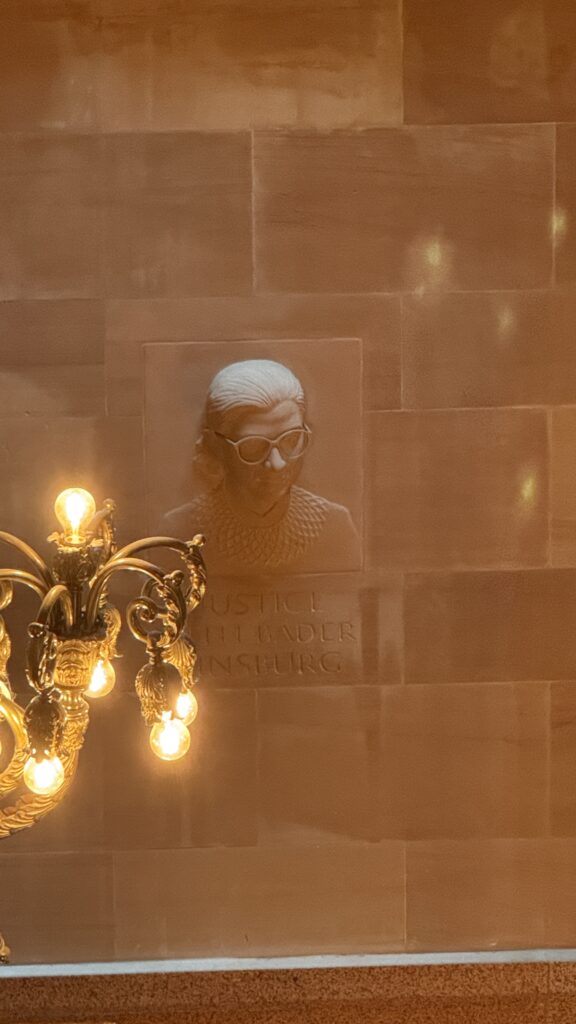
In modern times, a Ruth Bader Ginsburg sculpture was unveiled on the walls of the Capitol’s Great Western Staircase, increasing the total to 78 famous faces. The Supreme Court Justice and Brooklyn native is the first person to be added to the staircase in over 100 years.
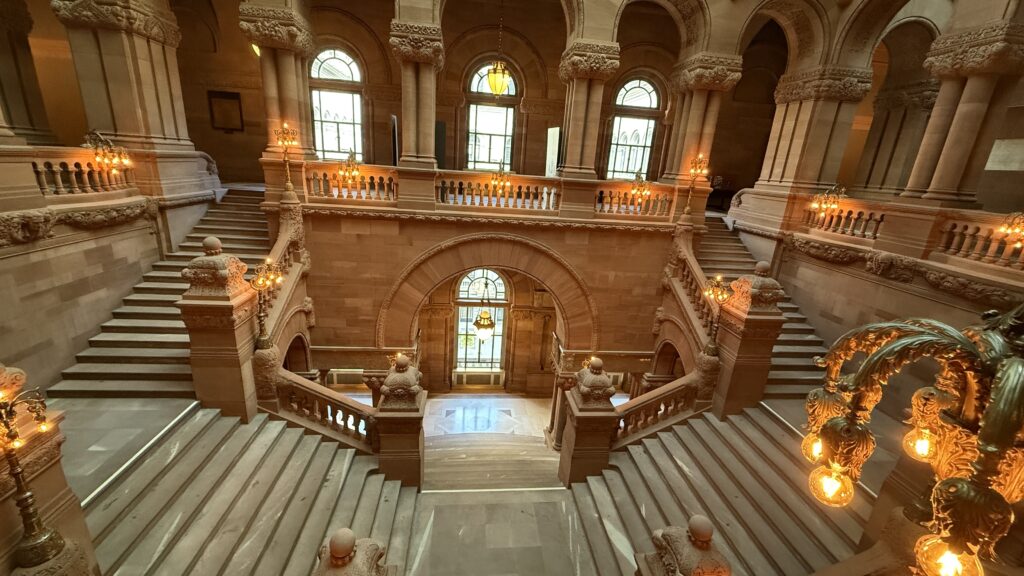
Wrapping Up
There were five architectural influences by the time they finished the State Capitol of New York 32 years (let that sink in) after it was started, at a cost of $25 million dollars–one of the most expensive buildings ever built in the country at that time. Each architect had their own unique style, creating additional delays and resulting in a final building which fuses French Renaissance and Victorian modified Romanesque styles that somehow works. New Yorkers are proud of the monstrosity, and rightly so. Though the combined efforts are a bit messy inside, the building has some extraordinary features that in some way work together to create an exquisite piece of art and a national Historic treasure.
Perhaps there is a personal lesson we can learn from this architectural review. Though we are all different, and have unique perspectives, if we work together we can create something beautiful and meaningful that endures even the most difficult times. And, the following Scripture also seems appropriate at this time.
Luke 14:28
“Suppose one of you wants to build a tower. Won’t you first sit down and estimate the cost to see if you have enough money to complete it?”
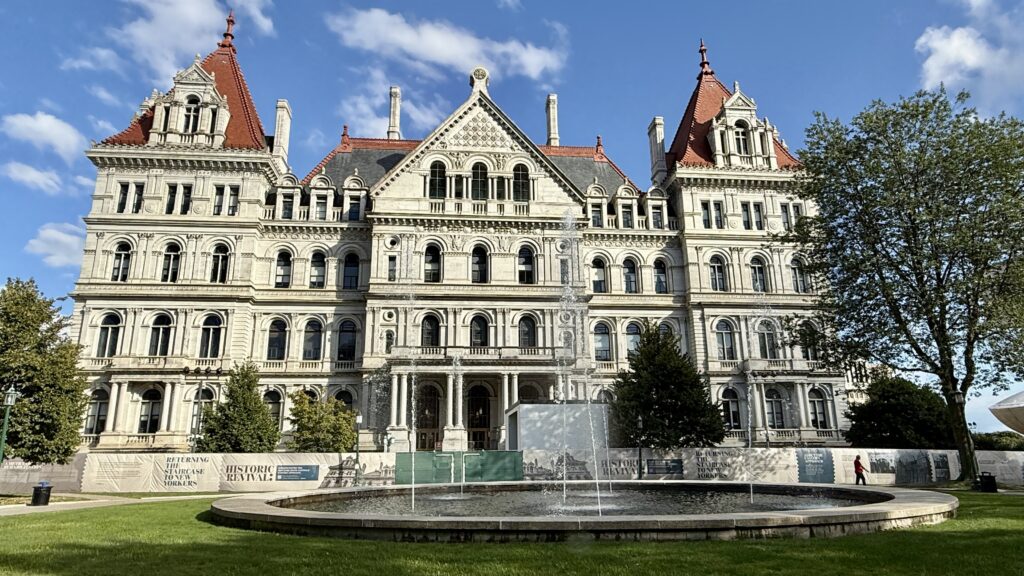
À la prochaine…hasta la próxima vez…until next time!
“I am the Lord, who heals you.”
Exodus 15:26

